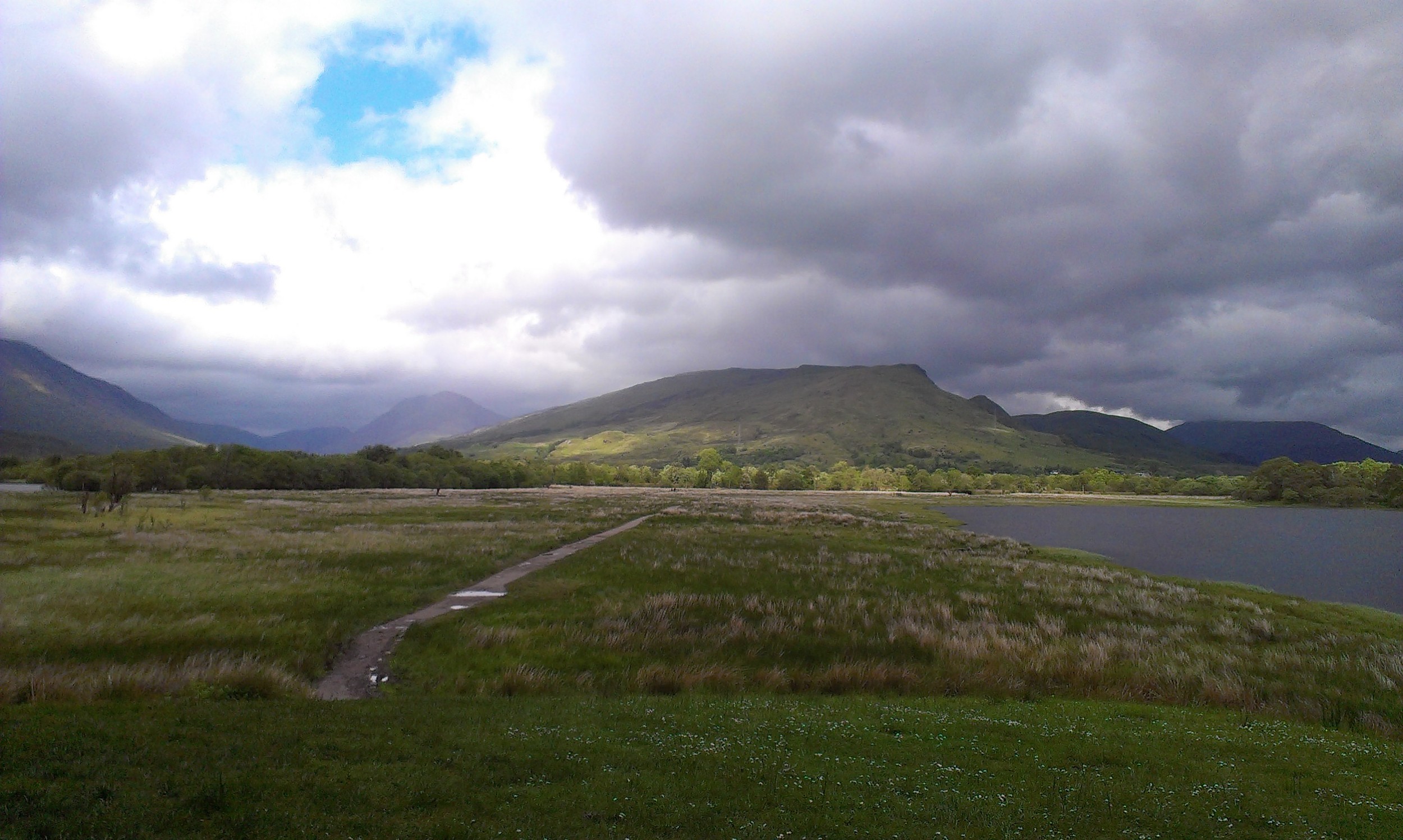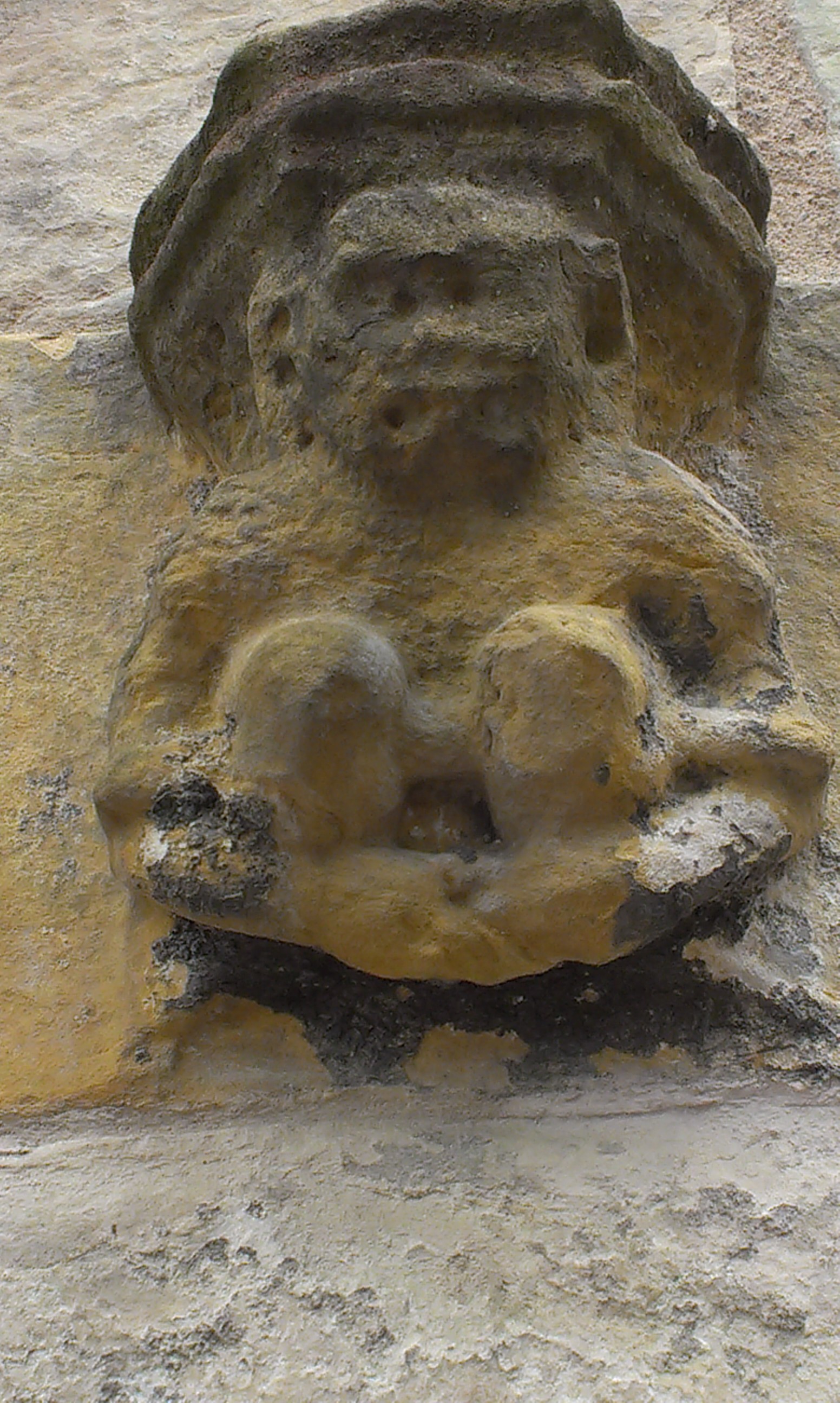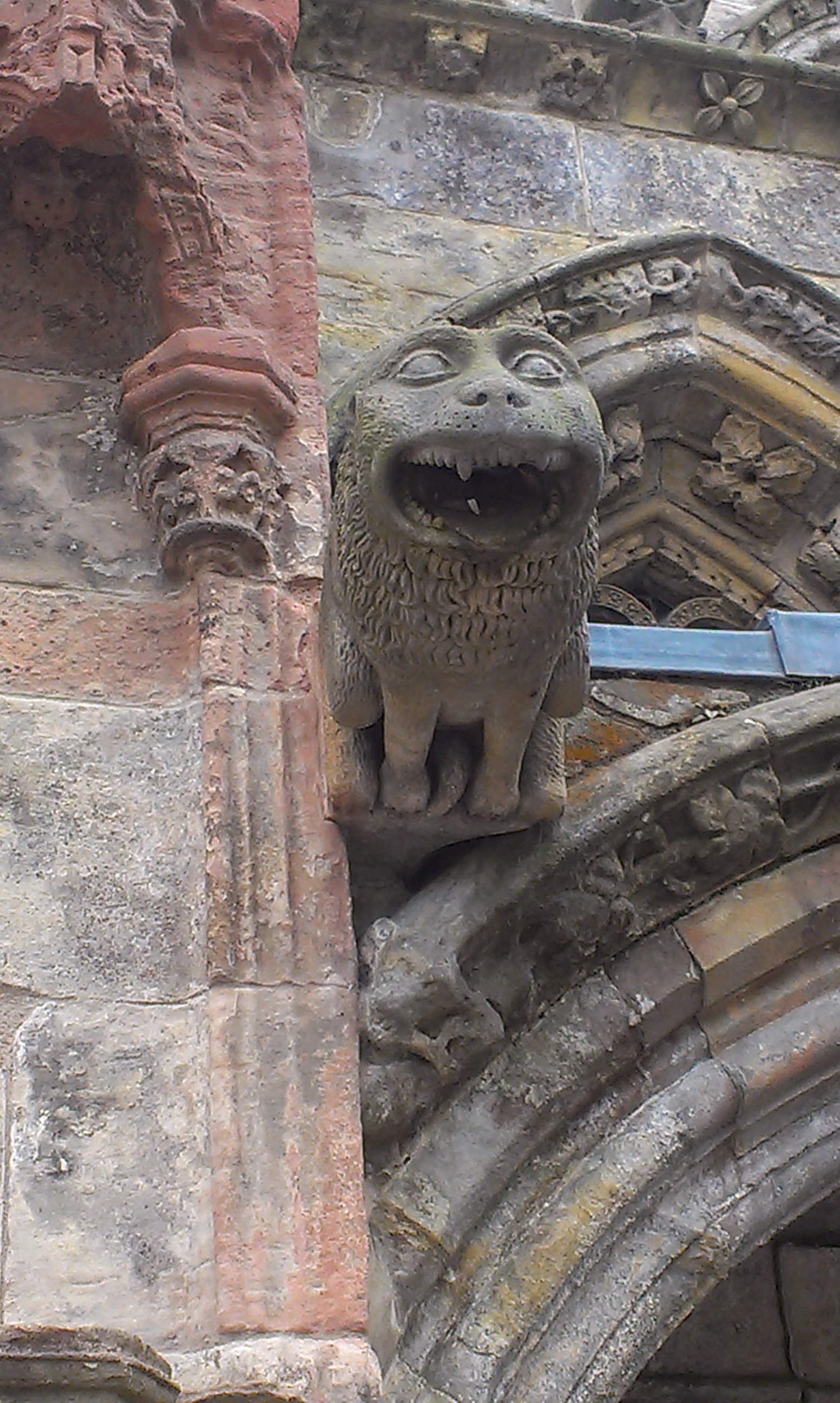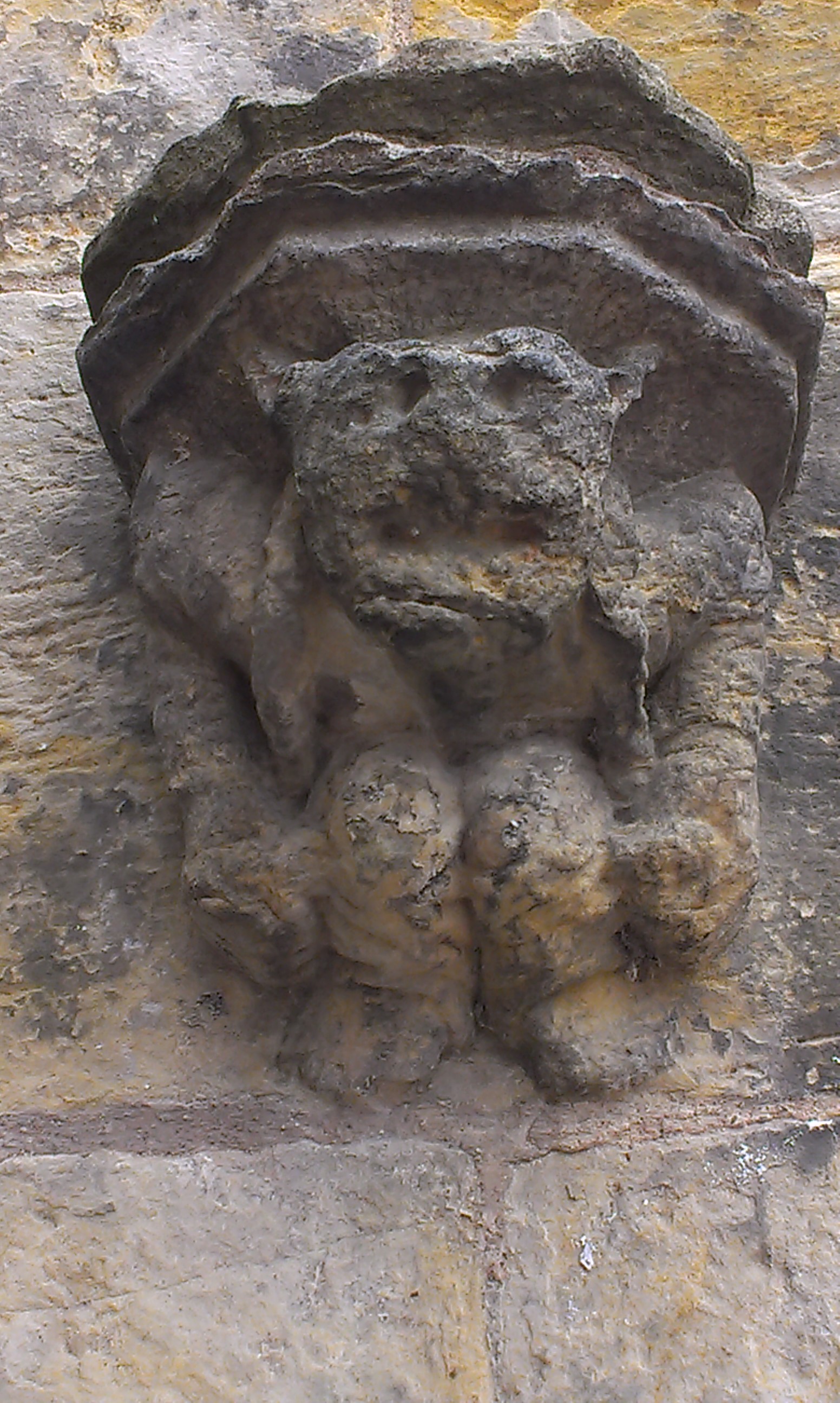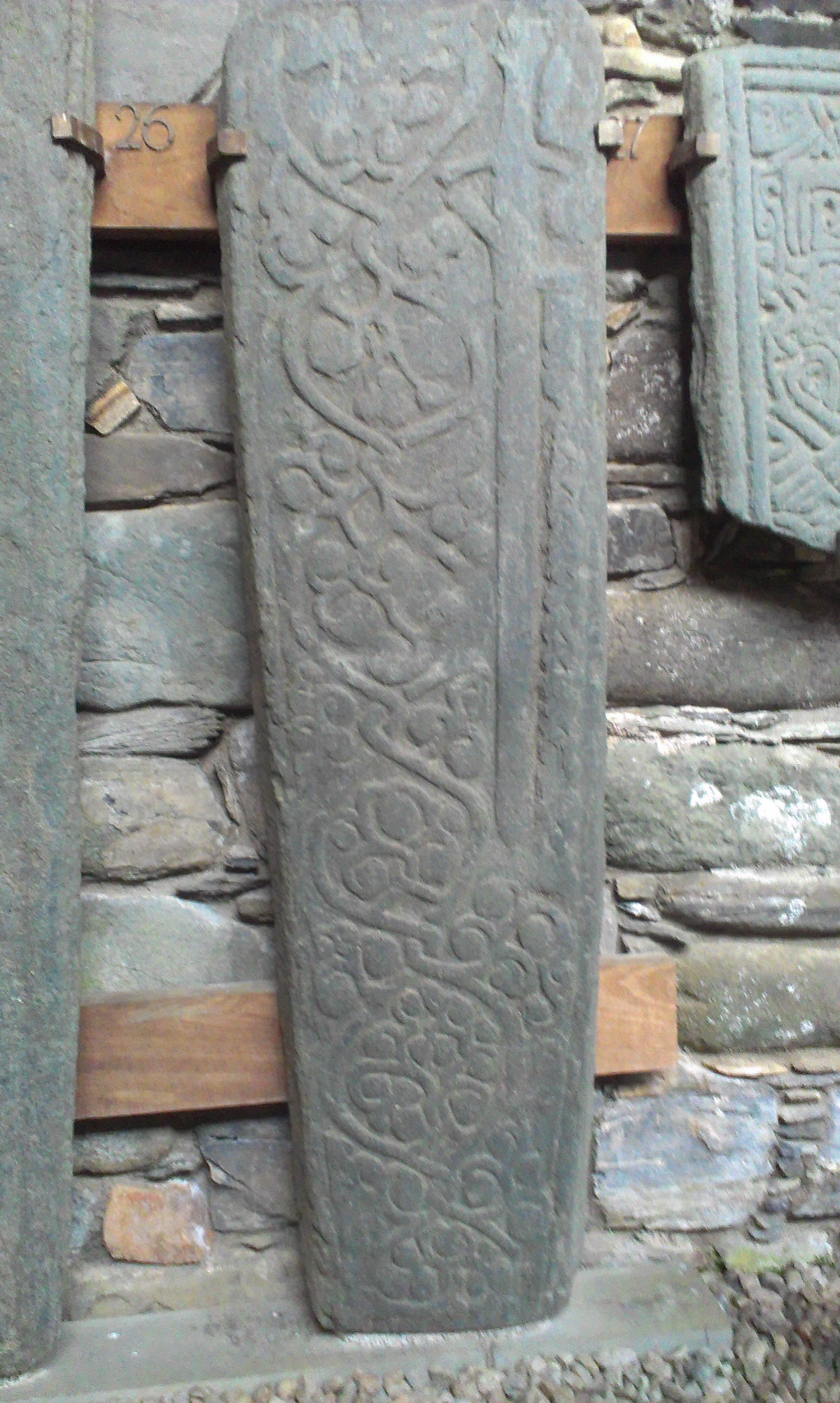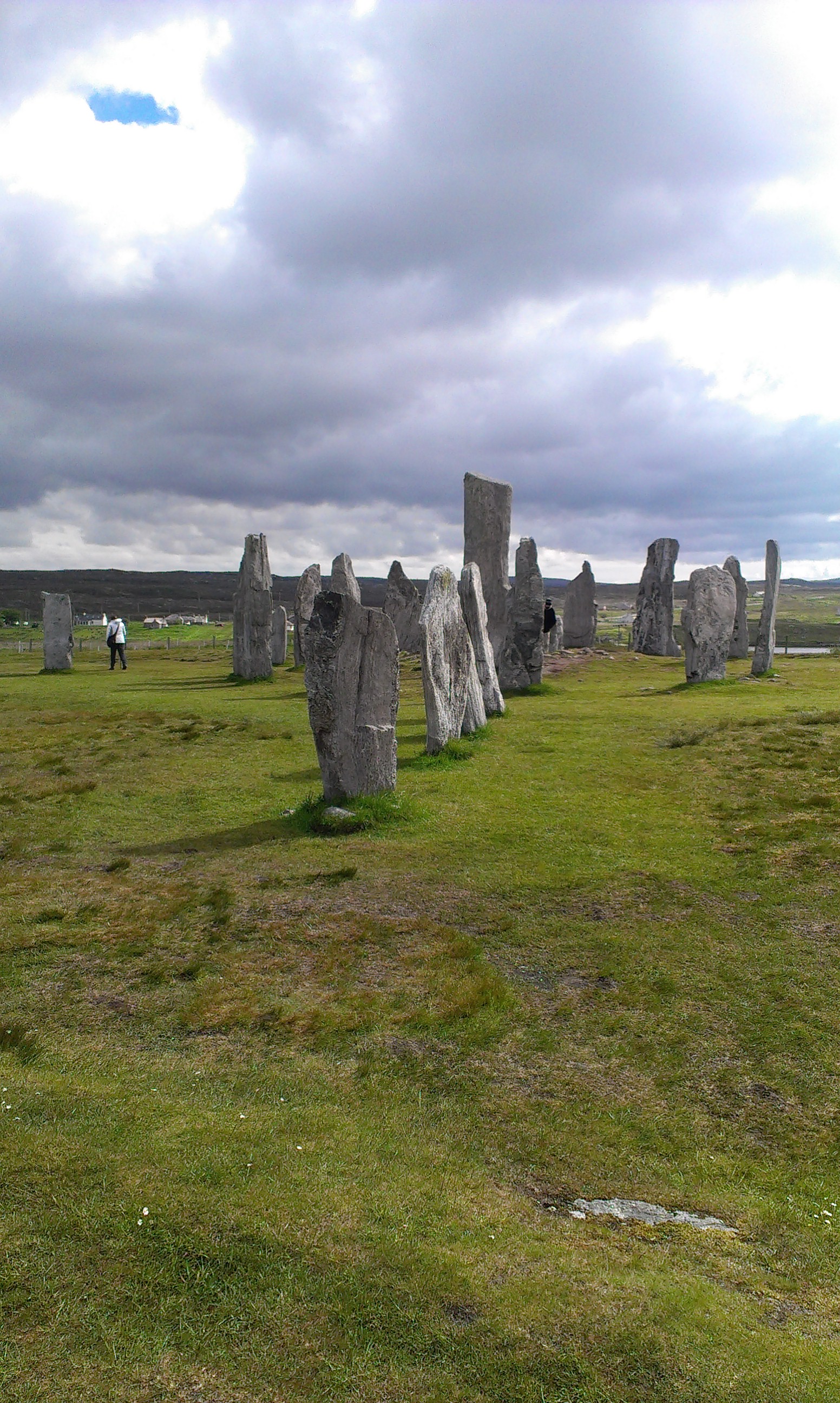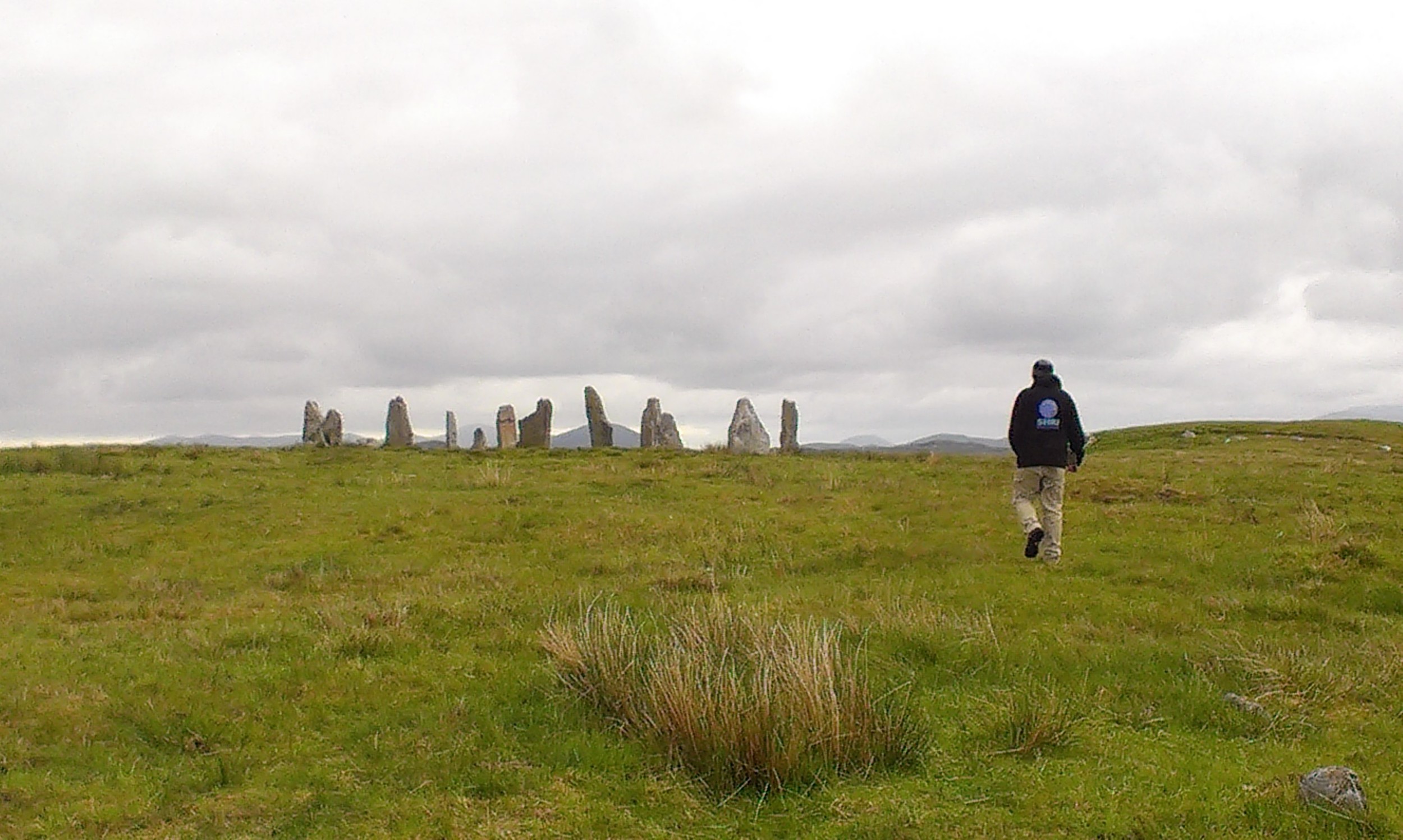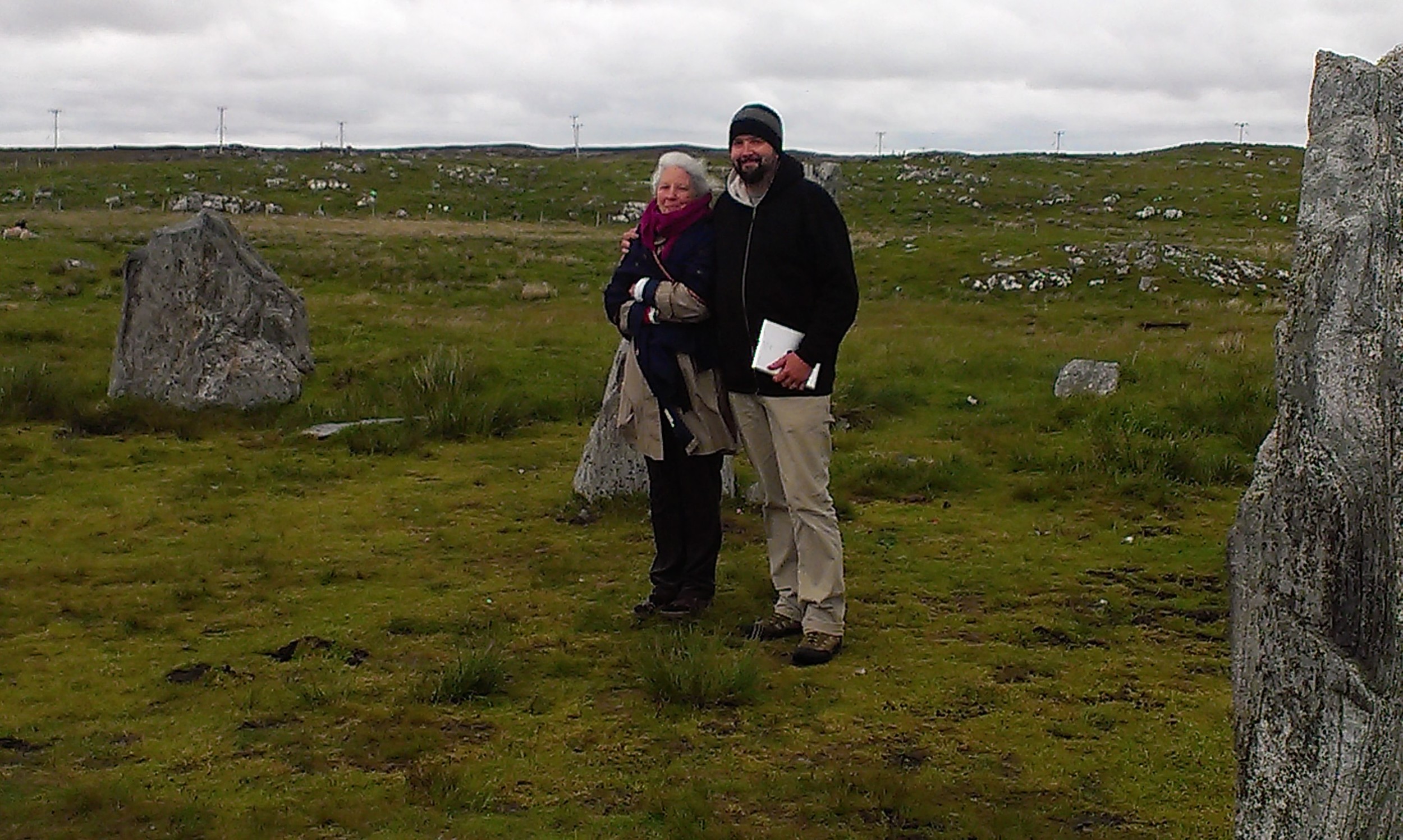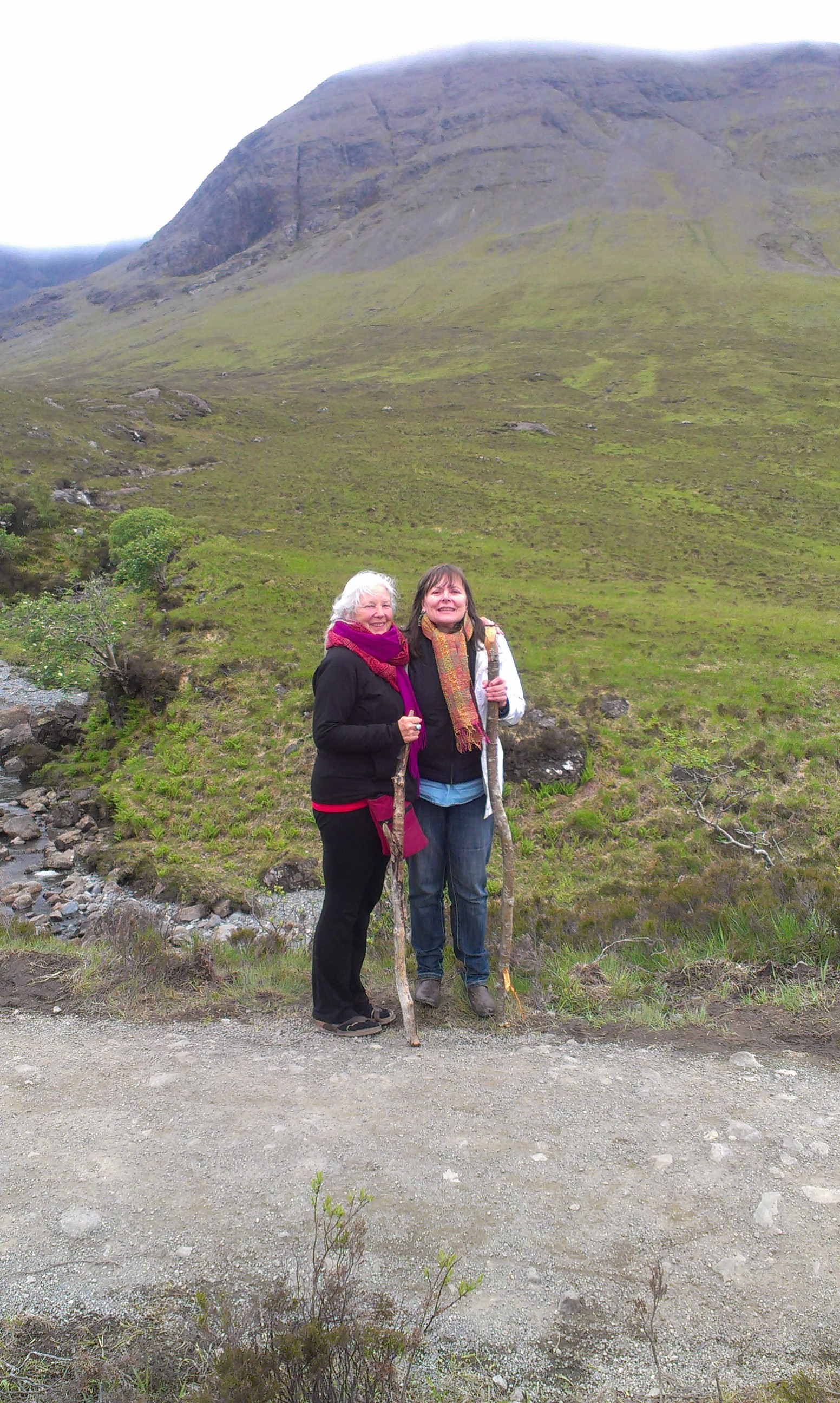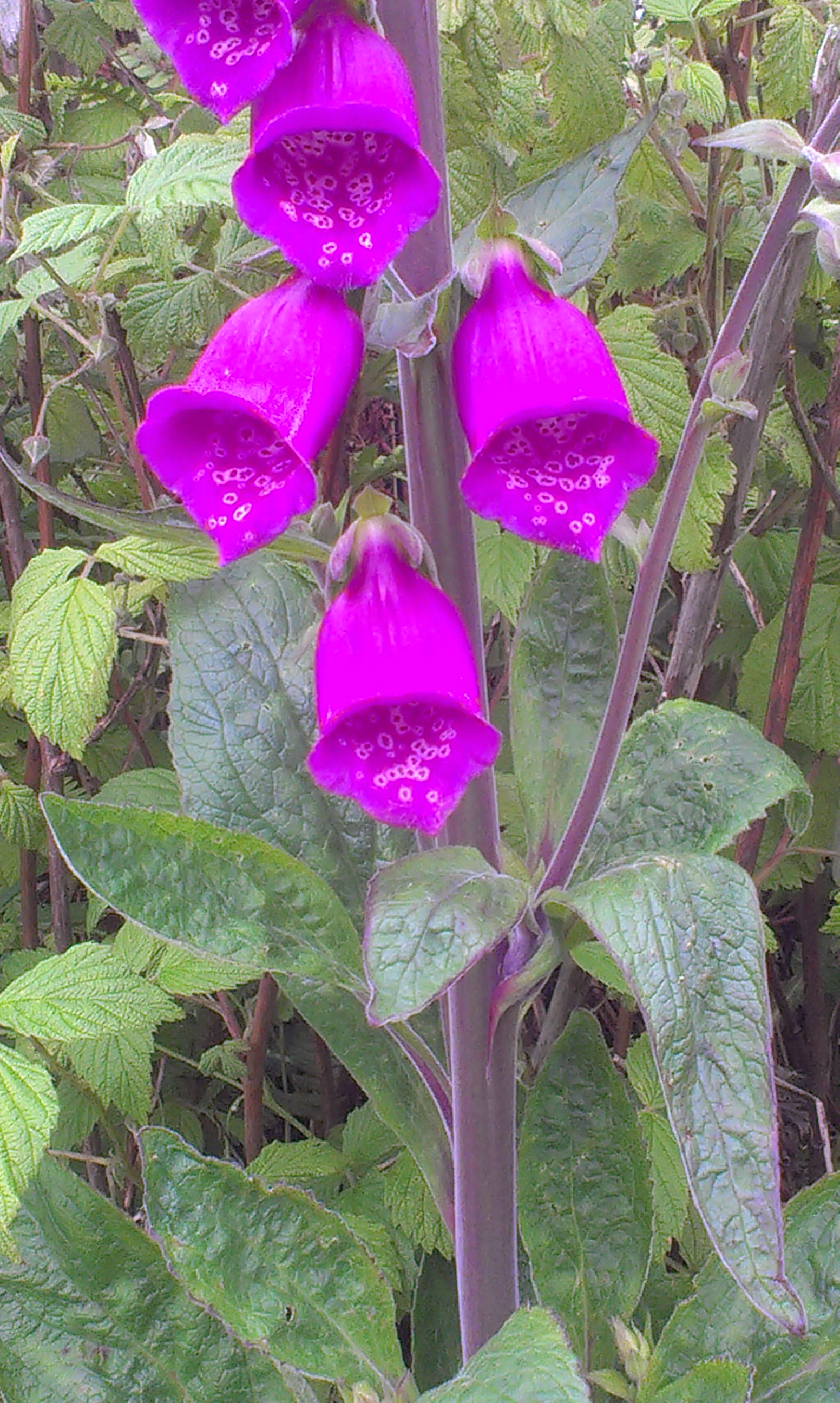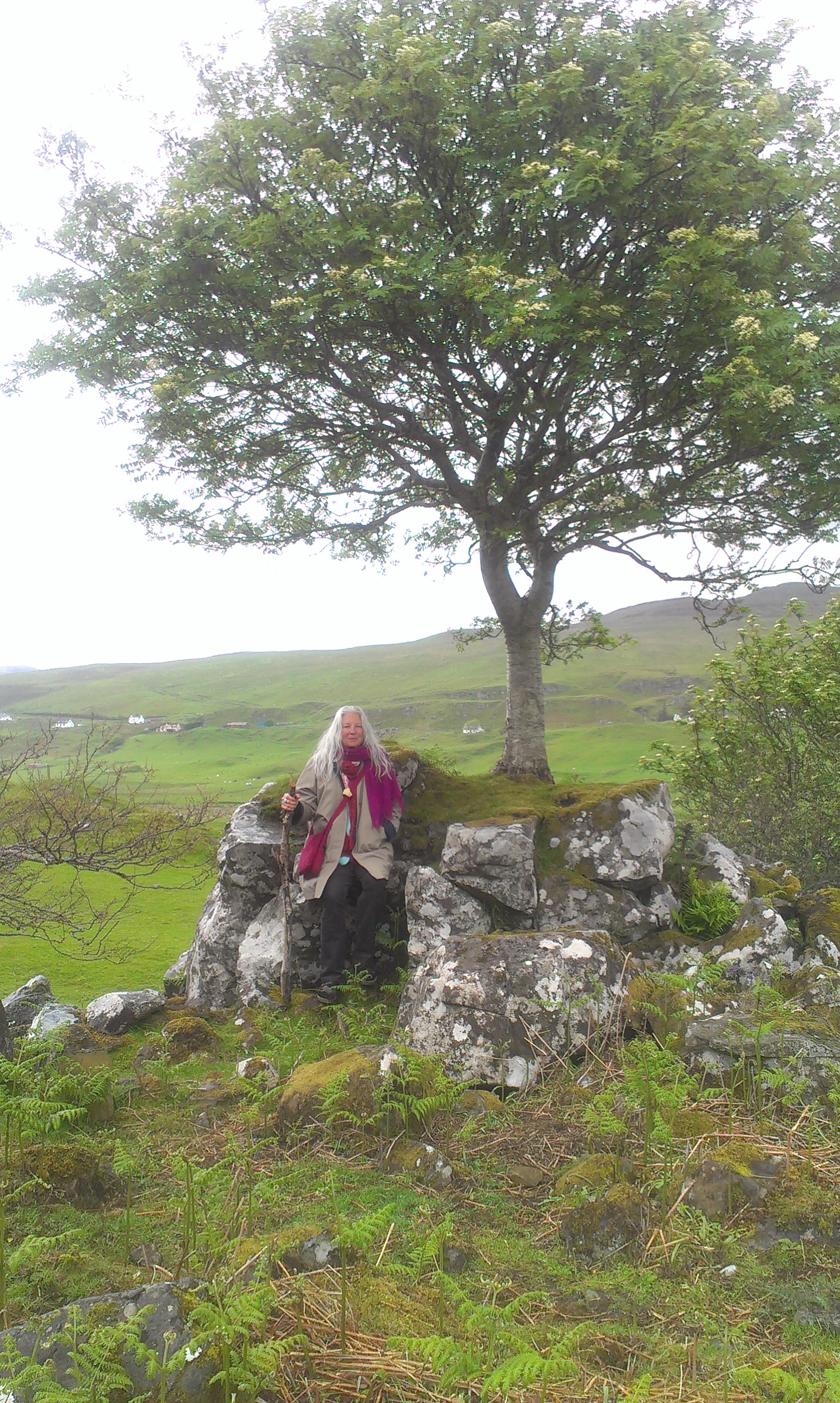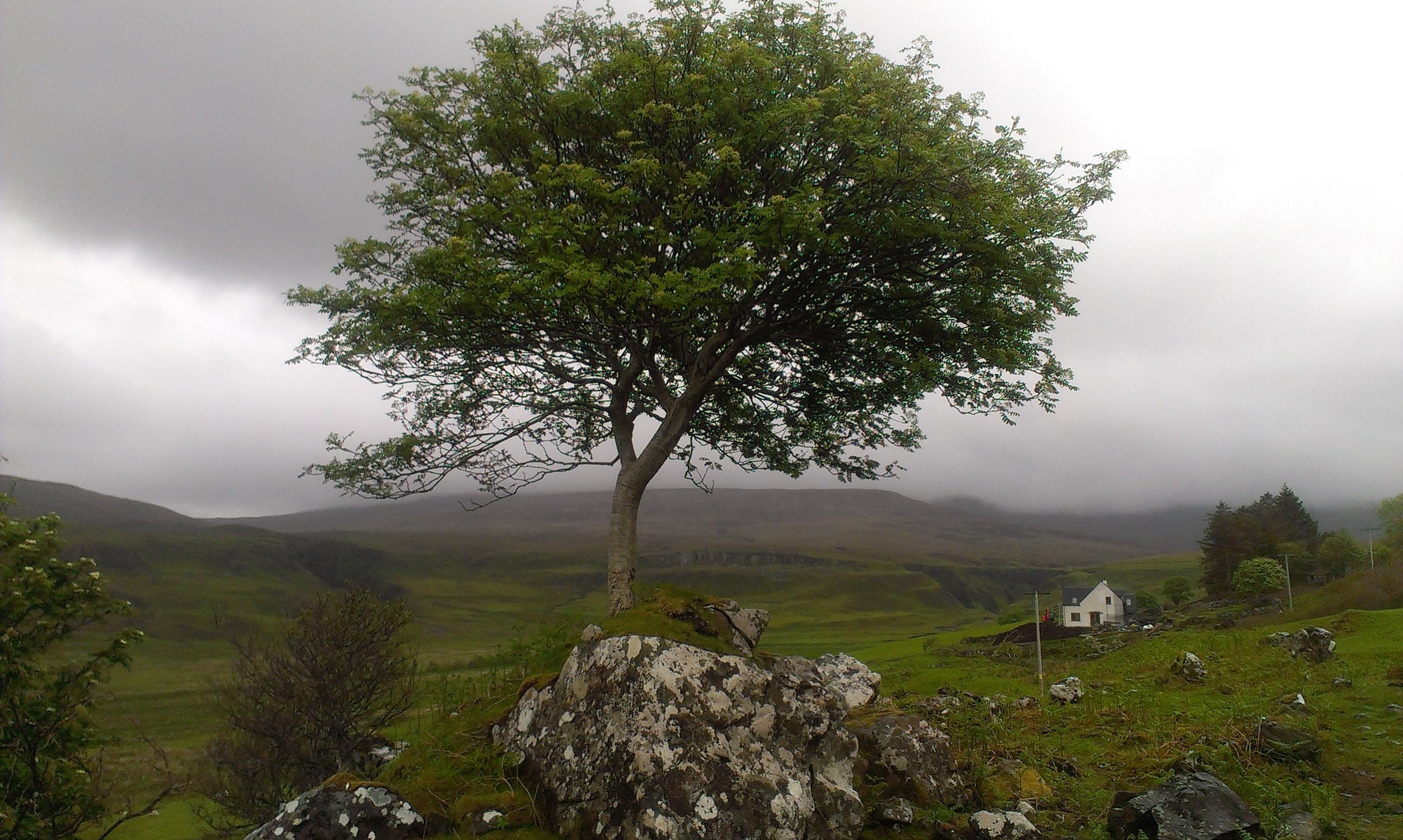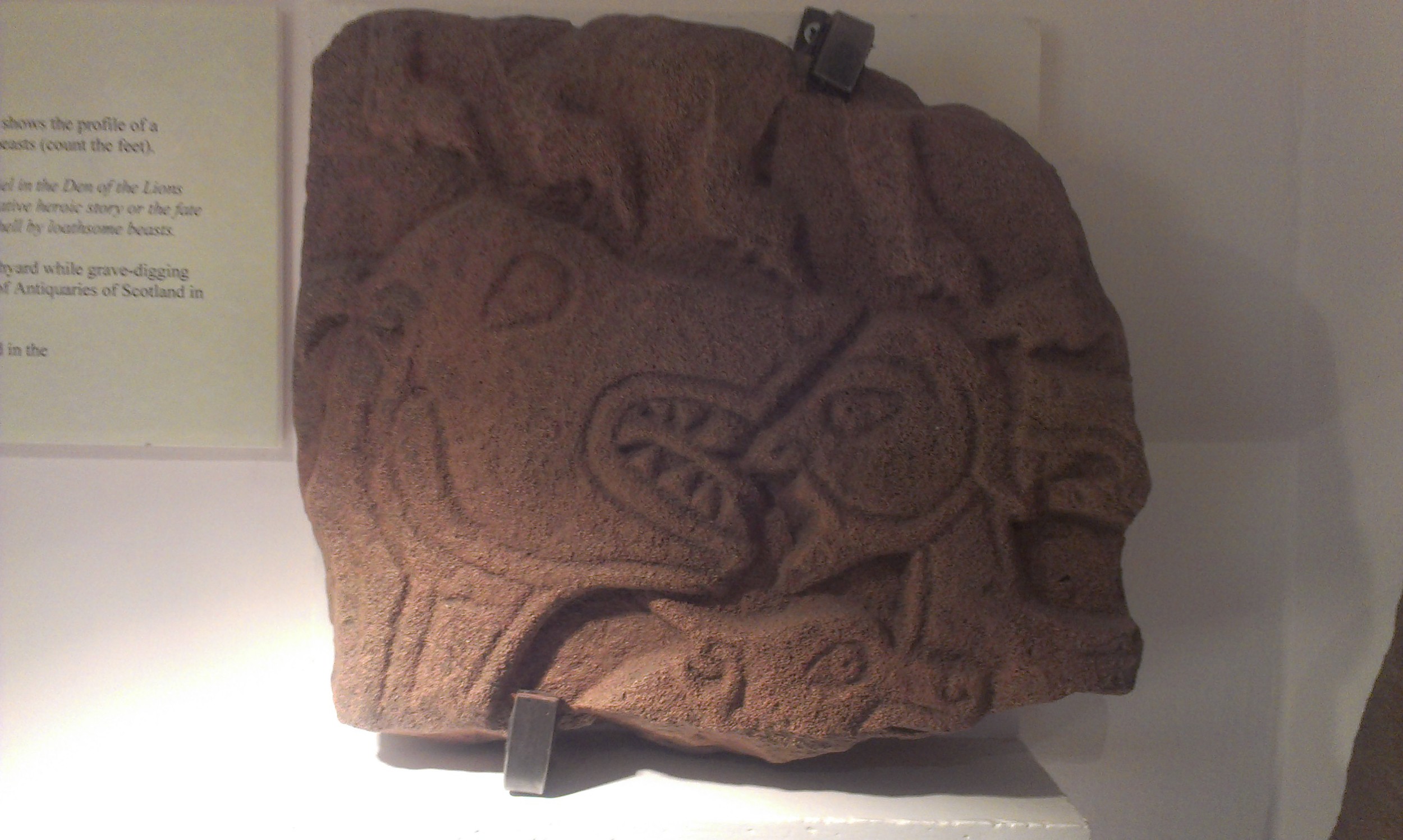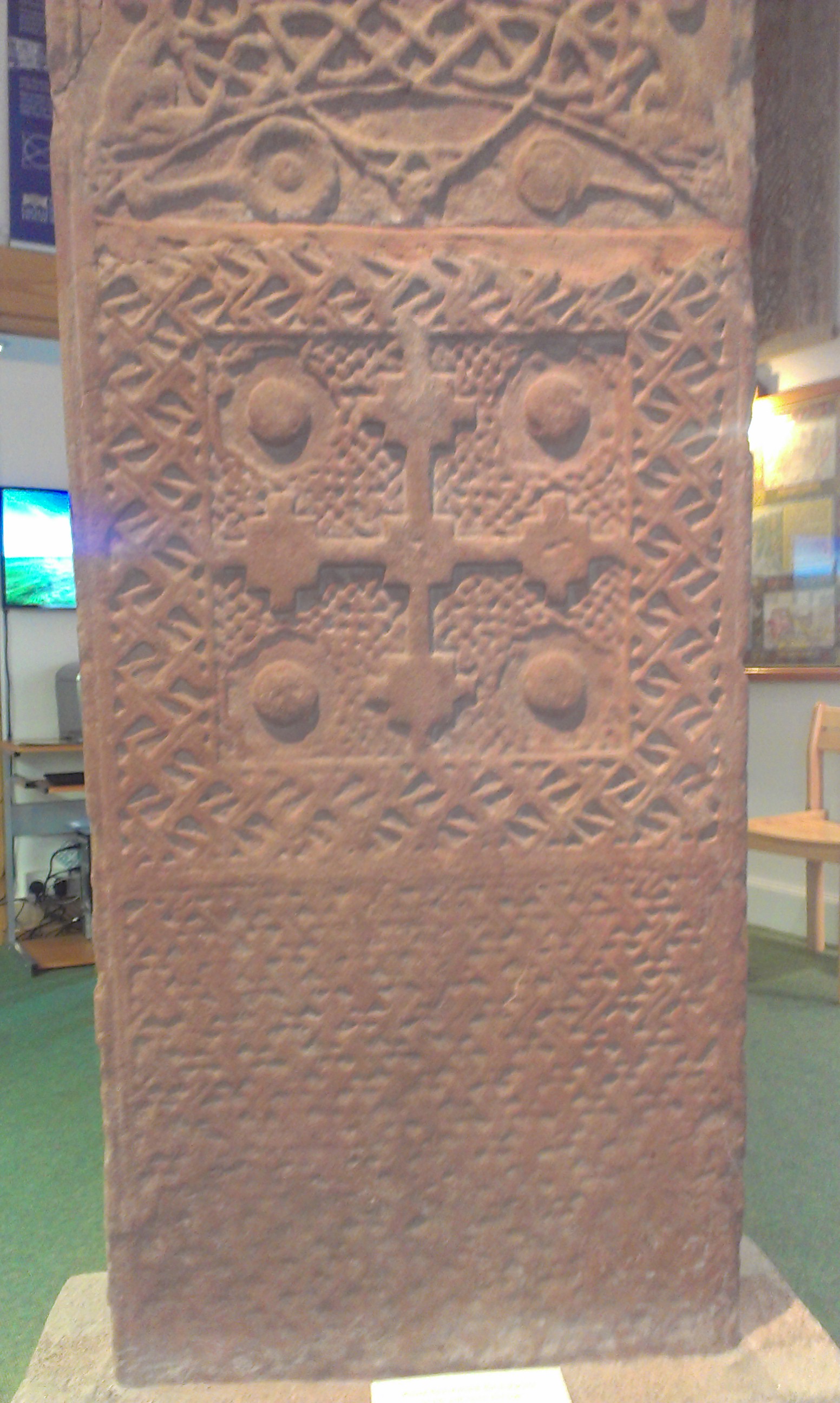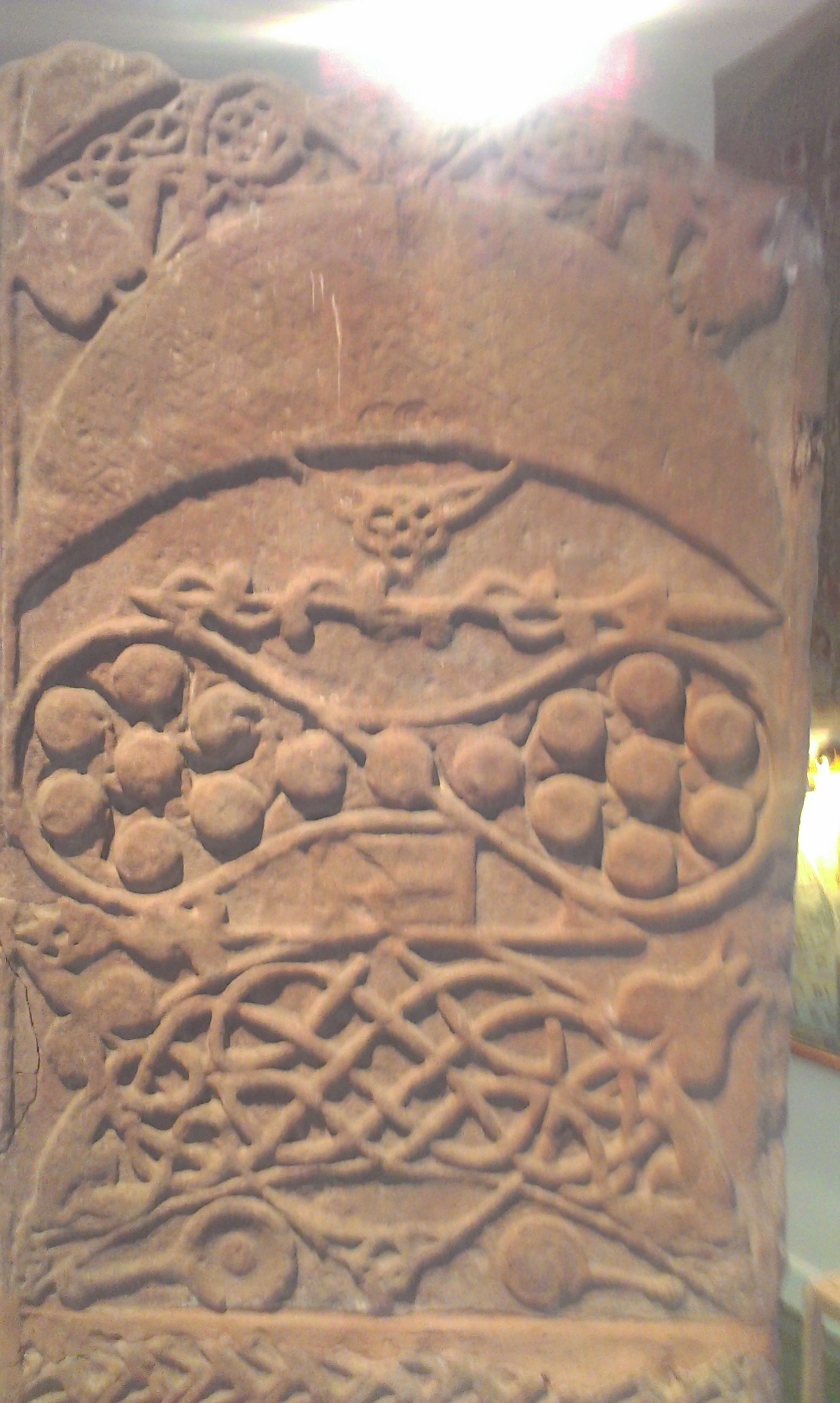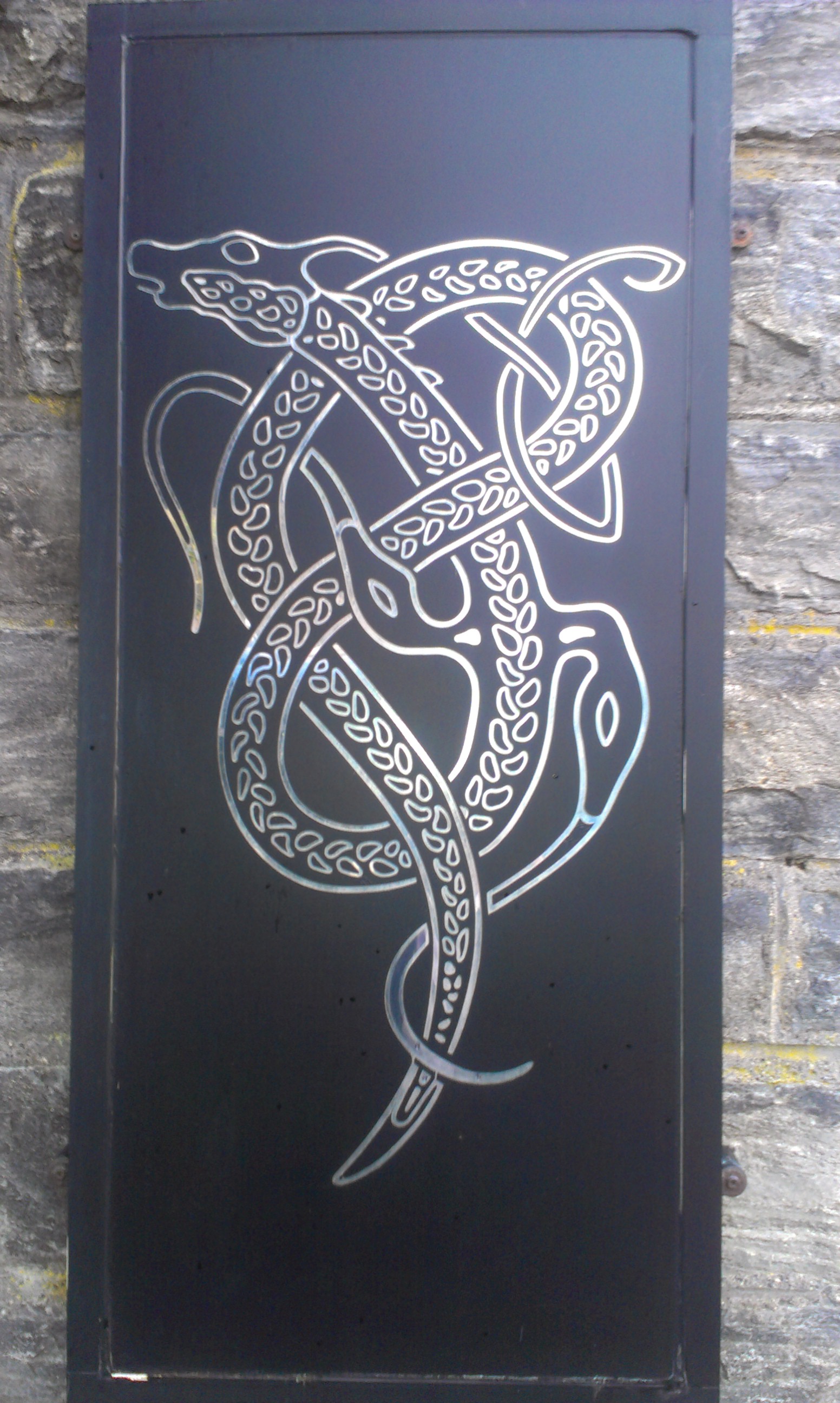Lift Your Voice – In Praise of the Five Elements
Each night before bed I go outside to contemplate the universe. Sometimes the sky is opaque, thick with clouds, impenetrable. At other times the same dark sky is the thrilling diamond spread of the Milky Way. Nature, the great metaphor, comes softly home: This is the way it is. Whether there are clouds or stars, behind it all is a vast mystery—steady, eternal, formless, unchanged, always present …
Read MoreWorking with the Muse
Many writers and creative people say that they must be at their computer, in the studio or atelier at the same time every day to meet and greet their Muse, or she will not come! I like the word “Mistress” because it suggests the bossy and erotic nature of the relationship with the Muse—once you get started on a project, she owns you, and she wants satisfying love play (hard work) on a regular basis. In essence, she wants your attention—body and mind, heart and soul.
Read MoreOn Pilgrimage in France: Seeking the Mother Goddess
Visiting friends in Montpellier, on the Mediterranean coast of France, my companion and I went on pilgrimage for a day, traveling east along the sea toward a one-thousand-year-old Romanesque church in Saintes Maries de la Mer. There the mysterious, black-skinned patron saint of the gypsies, Sarah al Kali, resides in her underground stone crypt, whose walls are covered with plaques of gratitude and relics of miracles that have been granted through prayers to this recondite saint.
Read MoreImpermanence & Love in the Bone
As my feet traveled along a path unknown to the mind, the silence resounded with the power of the mantra we had sung, Om Sri Ram Jai Ram Jai Jai Ram—victory to the Beautiful One, Ram. Breathing in and out, one foot moved before the other, slowly, over soft green grass. Others passed nearby along their own invisible trajectory. Thoughts came and went, whirled, churned, disappeared, revealing themselves empty as the sky.
Read More
Healer, Heal Thyself
One of the powerful tools we have to help us along life’s journey is to make use of ancient knowledge by transposing archetypical stories into the culture of today’s extremely challenging world. The ancient Vedics referred to this wisdom as the archetypal qualities of love, beauty, and truth—sat chit ananda—and embodied these in their gods and goddesses expressed through sacred images and teaching stories.
Read MoreOn Sahaja and Simplicity: Snakes, Death, and Freedom
What comes first: freedom or simplicity? Are these seemingly intangible elements interdependent? Do I have the simplicity that gives rise to freedom? And on the other hand, do I have the freedom to be simple? Am I able to cultivate simplicity as a doorway to freedom, both in my inner and outer worlds? Does the infrastructure of my outer life support inner freedom? Does the environment of my inner world support freedom in the outer?
Read MoreOn Sahaja and Simplicity
There were recently two weeks of intermittent blissful rain here in the high desert, always a time when the natural world is vivid and compelling. When it rains I want to be there, to be present to the display of Nature’s beauty; to be no one, only a listening, a seeing, a witness of what is occurring now, which may open into sahaja in a direct perception of reality. This is a refuge for the soul, requesting of me the quiet space and time to be contemplative.
Read MoreTrees
As these last days in France come to a close, it’s cold and blustery outside with a heavy gray sky. Bare branches dance in a winter landscape counterpoised with green grass in psychedelic hues. In the garden, masses of white snowbells and purple crocus bloom under the thorny branches of sleeping rose bushes. Here and there a few brave yellow daffodils peak out. It rains off and on, the streams are running high, and I continue to marvel at how everything in this part of France drips with water, even when it’s not raining. From my upstairs bedroom I can see the swift, glittering flow of the river across fields and trees.
Yesterday I walked in nearby woods with a friend. The ground was spongy with thick layers of fallen leaves, mold, dark green ivy, and mounds of mud—the underground activities of moles, I learned. Wandering through groves and thickets crisscrossed with deer trails, we came upon several trees that fell long ago but still live and grow from their reclining position on the ground spanning the curve of a small creek. The boles of these trees were covered with iridescent green moss that glowed against the brown, grey, and silver background of dead leaves, tangled branches and vegetal rot.
The winter face of nature speaks of death, darkness, quietude, desolation. Everything is breaking down and dreaming—a slumbering deconstruction in comparison with summer’s celebration of leaf, blossom, fruition and activity. And yet something, moss and ivy and all the hidden roots of things, still lives, grows, and thrives while most of the natural world is in a deathlike sleep, regenerating for spring’s rebirth. Taking in these impressions, I reflected once again on what winter has to teach me about the life of the soul.
When I was in my twenties I lived for six years in an intentional community located in a very remote area of the Ozark Mountains. Young and free (so we thought), full of vision and passion and verve, we ran wild on five hundred and twenty acres of some of the most beautiful land in the Buffalo River watershed. It was during this time that I first came to experience the way the seasons of nature reflect the seasons of the soul. During those years, through direct observation of nature, reading, dreams, gardening, and studying the patterns of life, I came to view things in terms of archetypal realities—just as there is man, there is woman, just as there is death, there is birth, just as there is spirit, so also there is soul. Just as there is God the Father, so is there God the Mother—the masculine nondual Oneness and the feminine Goddess as Great Nature. Years later I would come to know these polarities as Purusha and Prakriti, in the terms of Samkhya, one of the six great schools of philosophy found in the Indian tradition.
Creek feeding the Buffalo River, Ozark National Forest
So what does that mean in practical terms, as we struggle or saunter or wander or charge down the road of life? There may be something of utility in considering that perhaps a bit too much of our spirituality focuses on the spirit—nondual realization of self, of the timeless, immortal, unchanging consciousness, nondual Purusha. Maybe we need to pay more attention to Prakriti, the soul moving in patterns and cycles through time and space.
The soul is known by many names, but it is that individual being, created and beloved by the Creator, evolving in time and space, which Krishna tells us in the Bhagavad Gita will live forever because he/she/it has been created by Krishna (the Oneness and Allness of Everything). In the great process of divine evolution, soul becomes conscious to its true nature and takes on conscious responsibility for Creation—the Obligation to Praise.
This true nature—sahaja—awakens and unfolds in the interplay between Purusha and Prakriti, or Shiva and Shakti. Without Shakti, the eternal Shiva principle can do nothing. He lies supine beneath Mother Kali, his Shakti, which is the active principle of Creation. He lies passively, eyes closed in a swoon, while it is She who looks out upon us with tongue wagging in ecstasy, or to ward off evil (some say). Her eyes are curious, confrontive, playful, active, energetic, creative, dangerous, wild and irresistible. She is our Mother. She gives birth with one hand and death with the other.
Sahaja is the love child of Shiva and Shakti. The child is our true nature, which paradoxically is innate, already present and existent, and yet it must be awakened in order for the child to grow and evolve. This process of growth is what poet John Keats called “soul-making.” Why would we want to realize something beyond the unchanging nondual? Why would we want to stay in time and space to evolve? It’s a question to ponder with heart, not to answer with logic, and pondering it, I inevitably come to a contemplation of purpose and praise. Perhaps we want to evolve so that we may fulfill our purpose and enter into the necessary work of Praise.
Perhaps we are born to praise everything. When darkness falls, praise. When morning comes, praise. When evil appears, praise; when goodness reigns, praise. When there is faith, praise. When there is doubt, praise. My mahaguru, Yogi Ramsuratkumar, said many times, “Only praise. This Beggar wants only praise.” It was an essential instruction—the cure for everything, all ills and illnesses, is to praise. Other words for praise are: compassion, love, empathy, gratitude, and so on.
And yet praise is a wordless state of being. We benefit ourselves and others when we are in the mood of praise. Praise can be true of us even when we are depressed, despairing, desolate, devastated, in a process of deconstruction—like the magical beauty of delicate moss growing in ten shades of green amidst winter’s sleeping decay. Praise happens naturally when we see Nature as She is—alive with purpose, sentient, also praising, rejoicing in birth and death and all the processes in between. Anything and everything in Nature can be a reminding factor for the spiritual path; can transmit wisdom and initiate remembrance of what is true; can serve as a doorway into sahaja as a moment of direct perception. For me, this is especially true of trees—sentient beings that often inspire me to praise.
Once awakened, we are destined to grow in cyclical patterns of ever-expanding consciousness. And yet, we can go back to sleep for periods of time, like the trees every winter. How and when will we awaken? How do we carry an intention to awaken, when the time comes—when spring arrives in the season of the soul? There must be some part of us, like the moss on the trees, the sap that slumbers in the roots of things, that stays awake even when we appear to be sleeping, decaying, rotting, or even dead?
Spiritual practice, like meditation or mantra practice, grows something mysterious—an iridescent moss in the winter of our souls. Practice is the time-honored, universal way to cultivate intention and accumulate strength and force. Another way is to intentionally seek out beauty and sacred images in pilgrimages, called yatra in Sanskrit. Europe is one of the places where I love to go on small pilgrimages, seeking beauty and the sacred. I never know what surprise and delight, what teaching or transmission, I may discover.
Two weeks ago I went with a friend to L'eglise de Notre Dame in Montmorillon, and there we discovered a Black Madonna, sitting high on a pedestal in a shrine to the side of the Nave. The local people take her out of the church each year, carry her on a litter around the village and down to the river in celebration of her powers of heal—just like the goddesses in India. The last really big miracle attributed to this Lady was in the late nineteenth century. Maybe She is waiting to be awakened by a strong prayer.
L'eglise de Notre Dame de Montmorillon. Montmorillon, France
A week later I went to Tours, where we walked first to the Royal Basilique to see the relics of Saint Martin in an ornate tomb in the crypt. The skull bone of this famous fourth century Roman soldier-turned-holy man (he was bishop of the Cathedral of Tours) is a popular stopping place for pilgrims on the Santiago de Compostela in Spain. Sixteen hundred years ago he was revered for his deeds of kindness and charity, most clearly depicted in the moment when took off his military winter cloak and cut it in half with his sword to give it to a freezing peasant.
Tomb of Saint Martin in the crypt of the Basilique St-Martin.
From there we walked to the Cathedral de Tours. It is hundreds of years old, filled with sacred art and stained glass windows of brilliant colors. In the garden outside the museum next door, we discovered one of the largest trees I have ever seen—a Lebanon Cedar. I thought surely it must be a thousand years old, but the sign said it was planted less than three hundred years ago. This was a tree of purpose, of sentient awareness—a tree to make a believer of the unbeliever. This tree rivaled even the great redwoods of northern California, another favorite pilgrimage for this traveler. I find these and countless locations of natural beauty to be places of soul-making and sanctity, places of beauty and sacred atmosphere where I can remember purpose and praise.
Most striking of all—as I gazed upon the vast sprawling branches of the cedar—so heavy it has to be propped up with thick beams—I realized, she never loses her leaves, no matter what the season. Interesting indeed. The seasons continue to come and go all around her. Certainly she experiences cold in winter and heat in summer, and there is some difference in these different climates for her. But she has attained a certain endlessness, a continuity of self through cycles of change. The Lebanon Cedar is extraordinarily alive—a strong, immense, growing sentient creature that is evergreen. This, Mother Nature says to me, is a possibility for you, too.
Communing with an enormous Lebanon Cedar next to the Cathedral in Tours, France.
©2016 Mary Angelon Young. All rights reserved.
The Tantra of Travel
Central France, January 2016
Traveling is an adventure—a process of working with transition, change, and potential transformation, if we have an intention to be transformed by the transitory. Places, people, language, food, water, circumstances are suddenly different, new impressions come flooding in, and one never knows exactly what those will be. It’s not always pleasant, as you know, especially if you have spent many hours, as I have, sitting in a large jet airplane on long, transatlantic flights, in which we travel 36,000 miles above the earth at five hundred miles per hour, jammed together with a few hundred other people who are in various states of being, healthy or not, full of stress, tension or who knows what. Or if you’ve done some time sleeping in roach-infested beds on cold nights in Rishikesh, when the wind is blowing strong off the Ganges.
Then there is the release of arrival at a new destination. Ah, to be off the airplane and back on the earth again! When traveling, it takes some time for the various subtle bodies of a human being to come back together after landing. It’s good to drink lots of water, eat wholesome food or not at all. Keep it simple. Be ordinary. And especially, continue with practice. Wherever you are, practice is there. Observe what we see in ourselves or in our environment without being attracted or repelled (not easy!). Relax. Stay open. In fact, just learning to stay can be powerful and tremendously important in sadhana. It is one of the ordinary ways that we cultivate essential presence of being, inner stability, context, mindfulness, a capacity to pay attention and remember what is true.
To travel through the changes or in-between states from here to there in the transitory play of phenomena with an inner thread of continuity intact is one definition of tantra. I have discovered (and continue to learn) that transitions of all kinds offer the opportunity to develop continuity wherever I am, no matter how challenging circumstances many be. No matter what is going on, the Path is there for me, and I am walking on it. I can pay attention, I can remember, I can wait, I can breathe, and I can stay. Stay open, stay present, stay in place.
Traveling naturally breaks routines and expands boundaries, opens the doors of perception for fresh perspectives. It offers the opportunity to recreate myself, to be made anew in a very organic way within the flow of ordinary life. It is a chance to relax into the place of origination, to be pleasantly surprised by myself as well as others, to glimpse possibilities—and yet, to avail myself of those potentials depends upon having continuity, a stability of awareness in the midst of change. I can cultivate inner stability and quietude even if all hell is breaking loose around me. And even if all hell is breaking loose in my own mind and emotions, I can sense that a deeper awareness stays in place, down under where it’s quiet, just there.
A little more than a week ago I arrived in the lush countryside of central France. It was Christmas Day. The next morning I went to the early meditation on the rustic ashram where I live while in Europe. The sun is slow to dawn in that northern climate. It was pitch dark at 6:45 when meditation began, and it was still twilight an hour later, when I walked out into the grassy courtyard.
A full moon hung low in the western sky, a radiant golden orb suspended in deep blue dusk. Beneath the moon were two persimmon trees, bare of leaves like the tangle of trees all around but adorned with a few hundred ripe persimmons that glowed orange, heavy with juicy nectar. The grass was emerald green, even in the low light of the wintry dawn, and the bare limbs of the trees dripped with rain from the night before. Below my hilltop view, the valley, cradled in rolling hills, was a mysterious vale swathed in mists, with the lacy relief of bare treetops showing through. Coming from the dry lands of Arizona, I was stunned by the beauty of the scene, and all my senses drank in the rasa of the Sacred made manifest in Nature, all the more potent in those transitory moments between night and day.
Two days later I was in another transition, wrestling with a virus and physical discomforts on many fronts and in the midst of a three-day cleanse on lemon juice, water, and maple syrup, previously planned to happen before New Year’s Day. Of course, in France, there is no Whole Foods Market with a plethora of options for natural care when one comes down with a cold or virus. I was thrown back on myself in another small wave of groundlessness. When we are forced to rest and stay still with a physical illness, we come into contact with a level of mind blather and emotional regurgitation that we are often shielded from in the busy tasks of the day or even in formal sitting meditation. Is there something useful in the confrontation that occurs during illness? Is there anything essential or worth taking seriously in what comes up?
Most of it is detritus—the organism throwing off dietary excesses, impressions, and stored chemicals produced by weeks, months, years of emotional reactivity (see the science of psychoneuroimmunology) to various ensnarements and karmic patterns, which are then lodged in the cells and tissues of the body. I soon realized I was in a process of purification or cleansing on many levels. Purification was necessary, but it becomes truly useful if I cease habitual clinging to deep-rooted identifications and attachments—the strategies my mind has artfully arranged around life dramas and interpersonal snafus, which were now thrown in my face for a full viewing and re-assessment. It was valuable if I took high road of seeing what actually is and letting it all go.
On the other hand, there were deeper threads or primal elements and encounters with myself that needed further investigation. Perhaps, when we are “down” with a cold or flu or other illness, a message is being delivered by our true nature. Dreams may come in lurid swarms of communication from the depths. The primordial wisdom of sahaja is talking to us. I have heard many people say that their illness or diagnosis was “the best thing that ever happened" to them. On the most basic level, a health crisis, major or minor, forces us to stop running around doing things in a distracted, unconscious state of mind. Forces us out of denial about what is, especially the reality of the body. To stay in bed and allow a healing process to occur is no so easy for many of us. Sometimes the deep self has to force the issue. That leads to the main point of this essay, which is learning how to stay. Just stay.
It is interesting to observe how little habits eat away at inner stability. Stability can be developed in all kinds of small ways throughout our day. How hard is it to take a seat and just stay in it? Are we compelled to get up and run around, do one more thing, jump up and attend to something that is completely unnecessary in the moment? Really, it’s just one more distraction from being here and now. Just stay in your “seat,” whatever that is in the moment. Resist that urge to get up and run around! Being active and exercising is a good thing; constant distraction, fascination, and unconscious restlessness is another. What is it that drives us so?
What drives us is the complex of mind and emotion and the deep unease that plagues our inner lives. But that is not what I want to delve into today; rather, I’m interested in the small ways we can begin to build stamina and staying power in ordinary life. Here’s an idea! At random times during the day, stop what you are doing and just stay where you are. Take five minutes to just sit and feel into the space around you. Listen to the sounds you hear. Is the wind blowing? Are there traffic noises? Sounds of happy children playing? Music? Tune into the quiet whoosh of your own breath coming and going. Just breathe. To breathe is to live.
And what do you see? The room, the furniture, the window, what is outside the window? Is it green out there? Can you see the sky, the clouds, from where you are sitting? What is the weather like? What are the smells around you? Is food cooking somewhere, incense burning, a plant blossoming, or do you sense the musky, sweet, rank, or bitter smell of humanity? What time of day is it? Each time of day has its own quality—afternoon, morning, evening. Each has its own rasa as the Earth turns around the Sun and the light changes. Taste the rasa of this moment in your day. Just five minutes, and then you can keep going.
Staying power. Continuity. Making the most of transitions, finding the changeless within change, the thread of sameness that runs through everything, the legendary quiet, still place within. Tantrikas like Dr. Robert Svoboda talk about samarasa (same taste)—the Vajrayana Buddhists call it “one taste.” How do we get to know the simplicity of one taste? Cultivate staying power, stability, the strength to be simple, to wait and be quiet within. This cultivation deepens our spiritual way and can be done most obviously in meditation practice but also in potent and small ways, in the heat and pressure and speed of every day life. We can attend to details and demands with a pared-down, “no frills and no embellishments” approach, with a one-pointed focus of attention, to discover that there is freedom in simplicity.
For many years I was both attracted and disturbed by the idea of “one taste” as an aim in spiritual life. I associated this possibility with a deadening or denial of the senses, of relationship, and even of life itself. It hinted of a stultifying boredom—who wants to know only one thing forever? One might as well be in prison, or completely cease to exist! Over many years of time, I have changed my view. The aim of one taste is looking more attractive as time goes on and the reality of the Path—and the Buddha’s great teaching, “All life is suffering”—comes into sharper focus. I’ve been blessed to be in the company of great saints and teachers who have given me many glimpses of the true potential of the Path, both in their embodiment and in myself. Direct experience has shown me that simplicity, staying, cultivating one taste in fact opens out into a vivid enjoyment of life’s many tastes, but without grasping to hold on and possess, without cloying attachment and the suffocating affects of being immediately hooked by identification. When I possess my experience, I am obsessing neurotically about it; it soon grows dead and lifeless, losing its taste altogether.
When I am not obsessing and possessing experience, the openness of the infinite field of sahaja gives rise to all kinds of creativity and wise knowing. It’s very simple. It’s a process of letting go, but I’ve found that it’s hard to let go when I don’t have a foundation of strength, the power to stay with whatever is arising, including emptiness. Emptiness may be the most challenging experience of all, in which we need to develop a capacity to simply stay.
In his fourth talk in the Oak Grove in Ojai, California, J. Krishnamurti spoke about the difference between loving what we do and being “occupied” with what we do. To be occupied prevents the open space of infinite primordial sahaja, because there is a clamping down in order to grasp experience. When we truly love what we do—without owning, possessing, seeking, obsessing—we may fully savor the many tastes of life. Krishnamurti says that it is only when the mind is totally unoccupied, completely empty, that it can receive something new. Only then can a new thing come into being. On the other hand, to love what we do is a free feeling that occurs when there is a “cessation” of all ambition and drive for achievement, for recognition, for success. Krishnamurti said:
… When you love a thing, there is no occupation with it. The mind isn’t conniving to achieve something, trying to be better than somebody else; all comparison, competition, all desire for success, for fulfillment, totally ceases. It is only the ambitious mind that is occupied.
Similarly, a mind that is occupied with God, with truth, can never find it because that which the mind is occupied with, it already knows. If you already know the immeasurable, what you know is the outcome of the past; therefore, it is not the immeasurable. Reality cannot be measured, therefore there is no occupation with it. There is only a stillness of the mind, and emptiness in which there is no movement—and it is only then that the unknown can come into being. (August 14, 1955)
(pgs. 68-69, As One Is, J. Krishnamurti, Hohm Press)
Well, there’s not much left to say after Krishnamurti has leveled everything to one taste. And yet, he speaks of love and of loving what we do…
So, those are my thoughts today on the tantra of travel—an adventure that brings many different experiences, from unexpected adversity to the surprise of joy. The tantra of travel is about stability in the midst of change, about purification and transformation, about discovering one taste as much as it is about rasa and tasting many flavors. Tantra is about reality and about love. Tantra is about surrender. Travel offers a unique opportunity to interact with all these essentials of the transformational process.
We’ve ended in a fine, lovely mess, but now it’s time to go to the kitchen, where a mound of ripe persimmons wait to be prepared for human consumption, cleaned and blended into the lovely raw persimmon pudding that we eat here in Douce France in mid-winter, sprinkled with garam masala and doused with cream. The persimmons only come once a year, ripening after the frost. They are as sweet and pure a rasa as anything I’ve ever tasted—a transitory treat.
“Persimmon Heaven”
©2016 Mary Angelon Young, All Rights Reserved. Please do not copy or reproduce without permission.
For more about Khepa Lee, Yogi Ramsuratkumar, or Sahaja…
To enjoy reading more about the lineage of Khepa Lee Lozowick, Yogi Ramsuratkumar, and Swami Ramdas or the Bauls and Sahaja in the East and West, see my articles published in Namarupa Magazine:
Issue 14, Volumes 5-6 — “Remembering Lee Lozowick” (2011)
Issue 8 — “Yogi Ramsuratkumar” (2001)
Issue 9 — “Heart on Fire: The Bauls of Bengal” (2008)
Namarupa Magazine has been a source of inspiration for me for many years. Their commitment and integrity to the Indian traditions, sadhana and the spiritual path stands out as a beacon of light in the world today. I’m pleased that my work is represented in their publication. Back issues are available through Namarupa.
Remembering a few stories from the first time I met Yogi Ramsuratkumar
It’s hard to believe the following account of my first meeting with Yogi Ramsuratkumar was written almost twenty-five years ago. A few months after I returned from India in 1993, I submitted a piece of reportage to Om Sri Ram—the newsletter of Swami Ramdas devotees in the West. It was finally published by that journal in the fall of 1998. The lila that occurred between Yogi Ramsuratkumar and myself over this particular article in Om Sri Ram is chronicled in detail in the pages of As It Is, and in his biography, Yogi Ramsuratkumar, Under the Punnai Tree, but the article itself has never appeared in one of my books. It seems like an auspicious time to finally take this out of my archives and make it available.
From 1993
Traveling in India by bus from lush Anandashram in Kanhangad, Kerala to the more desert-like, dusty Tiruvannamalai in Tamil Nadu, we disembarked on the side of the busy road beside Ramanashram, where we stayed for the next few days while visiting Sri Yogi Ramsuratkumar. Ramanashram is the spiritual home of Ramana Maharshi, where he lived for many years until his death. Today it is a flourishing center of spiritual presence and the influence of this great saint. Arriving in mid-morning, we saw monkeys scamper and chatter around the grounds under huge, sprawling trees, while in the samadhi hall seekers from all over the world walked quietly or sat in deep meditation or inner reflection in the abiding presence of Ramana Maharshi’s relics and statue.
After settling into our rooms at Ramanashram, we went to the Sudama House where Yogi Ramsuratkumar was then living. It was November 1993, and at the time the property for Yogi Ramsuratkumar’s ashram had just been purchased; plans were being made for its construction. We were with our American teacher, Lee, who travels thousands of miles each year from the US to see his spiritual Father, Sri Yogi Ramsuratkumar.
Yogi Ramsuratkumar had been expecting Lee’s arrival, and as we were ushered through the gate of the high walls that surrounded the house and garden, he came moving quickly down the steps calling out Lee’s name. “Lee, Lee!” he cried joyously, “My Father is everywhere—all one, all unity, indivisible, everything, everywhere, all one!” This proclamation of the oneness of all life, or as Ramdas would have said, “Everything is Ram,” was the first thing I heard Yogi Ramsuratkumar say. Indeed, for most of us on the trip, this was our first sight of Yogi Ramsuratkumar in person.
Stopped in my tracks by the sheer auspicious power of the moment, I watched as Lee fell to the ground in a full-body pranam. Right away Yogi Ramsuratkumar reached out a hand and pulled his Western devotee to his feet, chuckling and clapping Lee loudly on the back and shoulders. As they walked up the steps to the porch, Yogiji's arm twined around Lee, the nine of us travelers from America followed, knowing we were entering an extraordinary world of wonder, awe, and melting hearts.
In that first sight of him, it was clear that Yogi Ramsuratkumar lived up to his name—“The Godchild of Tiruvannamalai.” He was divinely childlike and yet elegant and regal in his beggar’s rags—old dhotis wrapped around his body and shawls stained from time on the streets. His beard was snow white underneath a green turban, which he wore wrapped around his head over blue-black hair. His eyes sparkled with light and sometimes shimmered with tears as blessings poured from his raised hands or simply from the radiance of his being. After seeing the sublime sweetness and unimaginable compassion that radiated from the face and eyes of Papa Ramdas in photographs and videos, Yogi Ramsuratkumar seemed to me a true spiritual son, molded in the image of the father and yet also a uniquely different expression of the Divine.
This quality of divine nectar, which was so radiantly alive in Yogi Ramsuraktumar and apparent in photographs of Papa Ramdas, came to life in a different way when I was fortunate to see a video of Swami Ramdas filmed by the imminent French filmmaker and spiritual teacher Arnaud Desjardins. Traveling in Europe with Lee in 1992, we were guests at Font d’Isiere, the ashram of Arnaud in France at that time. There he granted us the privilege of seeing rare footage of Papa Ramdas and Mother Krishnabai, which he had filmed at Anandashram in the early 1960s. Arnaud had a great love for Papa Ramdas, which he expressed by showing us a carefully folded dhoti, which he took from a locked glass case in the meditation hall, and held it out in his hands with reverence. The dhoti had been given to him by Ramdas many years ago, during Arnaud's stay at Anandashram. I remember well watching the film with a full heart, touched to the core by the sweetness in the saint's eyes. Because of Arnaud, I received an unforgettable darshan of Papa Ramdas.
One evening during our visit in Tiruvannamalai, Yogi Ramsuratkumar told the story of his relationship with Ramdas, his guru. He said that when he was at Anandashram in 1952, Papa Ramdas initiated him into the mantra, Om Sri Ram Jai Ram Jai Jai Ram, and told him to repeat it twenty-four hours a day. Listening and watching the Godchild, I was astonished to see Bhagwan become contrite and tearful as he said, “This beggar tried for one week to chant, and then Papa was with him all the time and everywhere. Papa was everything—nothing else, nobody else but my Father. This beggar didn’t do what Papa Ramdas told him to do.” The depth of his devotion moved my heart; I was powerfully touched by his wish that he could have done his Father’s bidding, to chant the mantra as Ramdas instructed, even though he ceased chanting because he had become one with Ramdas and his Father in Heaven.
At another time Yogi Ramsuratkumar said, “In 1952 Ramdas killed this beggar,” referring to the death of his personal identity and surrender at the feet of Swami Ramdas. I had heard these stories before, but hearing them from Yogi Ramsuratkumar himself made a deeper impact in mind and heart.
Throughout our visit with the Godchild of Tiruvannamalai, poetry written by Lee for Yogi Ramsuratkumar, was read aloud. A small book of these poems, titled Poems of a Broken Heart, had recently been published by an Indian devotee in Madras, at the request of Yogi Ramsuratkumar. Every day Yogi Ramsuratkumar asked Devaki Ma to read Lee's poems over and over again. Often she read poems that spoke of Yogi Ramsuratkumar’s love for Papa Ramdas and Mataji Krishnabai; then Yogiji would sit silently for a moment. “Read that one again," he would say. Then, after another reading, he would repeat the request: “Please read that one again for this beggar.” The following poem is one that Yogi Ramsuratkumar asked Devaki Ma to read many times in a row:
I heard stories of Your great love
For Papa and Mataji
Yes, You Rascal,
You were Mad even then.
This arrogant Fool Lee
Cannot love You like this on his own
But if You give him the Blessings
Of Your Father in Heaven
Then Lee will love You
Even as You loved Them.
Oh Father, Yogi Ramsuratkumar,
Your son begs You for this gift.
At the end of the reading Yogi Ramsuratkumar turned to Lee and, in a melodic and tender voice full of love and wonder, asked, “Lee, how did you know? How did you know this beggar felt that way about Ramdas and Krishnabai?”
Ma Devaki, Yogi Ramsuratkumar and Lee Lozowick, Tiruvannamalai, India 1993
While we were in Tiruvannamalai, we spent some time at Ramanashram and walked up Mount Arunachala, the abode of Lord Shiva. Considered one of the great holy mountains of Mother India, we were eager to visit Skandashram, a small enclave of buildings on the mountain's flanks where Ramana Maharshi lived in solitude before Ramanashram was built. There he had meditated in a small dark room hewn out of stone on the side of the mountain. We refreshed ourselves in the cool water of the rushing spring that feeds tall shady trees surrounding the old stone buildings of Skandashram, creating a very green backdrop for a place so profoundly imbued with spiritual power. Hiking back down, we went inside the small cave where Papa Ramdas lived and meditated and experienced his spiritual awakening.
The next day, our pilgrimage to the immense, impressive Arunachaleswara Shiva temple in the town of Tiruvannamalai was unforgettable. With its traditional, ornate gopurams, bluegreen pool and labyrinthine depths, the dark corridors and shrines of the inner temple were filled with holy relics and artifacts; it is the kind of spiritual treasure that India so lavishly offers to the world. But even the splendor of the temple could not keep us away from the living saint; we couldn’t wait to return to Sudama House to sit in the company of Yogi Ramsuratkumar. We spent many hours sitting with him for hours while we chanted the mantra of his name and Om Sri Ram Jai Ram Jai Jai Ram. During that time he often served prasad or milky, sweet coffee to us, with his own hands. Once Devaki Ma brought a tray of fresh roses, and Yogi Ramsuratkumar walked around our group, dropping a lush, perfect rose into each of our waiting hands.
On our last night in Tiruvannamalai we were invited to a delicious dinner with Yogi Ramsuratkumar, Devaki Ma, the Sudama sisters and a few of Yogiji’s Indian devotees at Sudama House. This was to be our last darshan with the holy beggar—we were soon to fly back to Arizona. That night Yogiji brought our visit to a close by giving us packages of prasad—sweet, hard rock candy. Each of us went up to bow and pranam at his feet and receive the gift of prasad from his hands, along with his words, “My Father blesses you.”
Knowing we would leave in two days to return to the States, this parting was bittersweet for me; sweet because of the joy and happiness I felt to be in the company of such a rare being and receive his infinite blessings, and bitter because I knew I was leaving Mother India and Yogi Ramsuratkumar. I had no idea when or if I would see the Beggar Saint of Tiruvannamalai again. I thought of Swami Ramdas and Mother Krishnabai, and the many other beloved saints of India, and of Anandashram and my experience there, and I wished with all my heart that I might return to bask in the blessings of the Divine so richly present in the incredible spiritual culture and heritage of this amazing land. (Based on the original essay published in Om Sri Ram, 36 Collected Issues, Volume I)
Little did I know at the time that I would travel to India many times and would be blessed with precious opportunities to spend hours and days in the company of beloved Bhagwan, Yogi Ramsuratkumar. Numerous lilas with Yogi Ramsuratkumar transpired in 1993, as well as in 1998 and 2000, many of which are recounted in depth in two of my books, As It Is—A Year on the Road with a Tantric Teacher and Yogi Ramsuratkumar—Under the Punnai Tree (Hohm Press).
©2016 Mary Angelon Young, All Rights Reserved. Please do not copy or reproduce without permission.
The Transformational Power of Myths & Stories
Excerpted from my upcoming e-book, On the Road to Enlightened Duality
Mistress of the Blueblack Void
During recent decades, the vital function of myths and mythology in human culture has come back into focus for many contemporary people the world over, largely due to the teachings of visionaries such as Carl Jung, Joseph Campbell, James Hillman and others. Why is mythology so important? Myths are messengers that speak directly to the human soul. They are symbolic stories that carry vital, powerful, universal information about Life and the soul; they teach us how things work, from macrocosm to microcosm.
Myths commune with us through the nonlinear pathways that connect imagination and heart with the mind. If we are open to receive them, the living archetypes of myths will instruct us and transmit wisdom. We need only to hear and receive, and the story will work its magic on us at deeper levels of being, for their twilight language of symbol and poetry is essential to our true nature.
It’s a sad fact that we have lost contact with our inheritance of living mythology in the midst of today’s global techno-culture. We have forgotten how to speak the twilight language of the soul. Upon hearing a story from India, Africa, Ireland, old Europe, or the Native Americans, people often say, “What does that mean? I don’t understand.” Understanding is not the point. Myths are not rational or linear. They bypass the logical, earthbound mind and resound in flights of the imagination, hinting of the subtle grandeur of a layered, multivalent cosmos, in which anything is possible.
In the sacred culture of the Indian tradition, the symbolic language of myths has such a central importance that it has a name; it is called, in Sanskrit, sandhya bhasa. Once we embark upon the spiritual path, we begin to encounter the reality that is communicated through twilight language, and it is this form of communication that begins to speak to our hearts in poetry, story, and scripture. As we listen deeply to its whispers and songs, sandhya bhasa calls to us, asking us to remember the life of the soul, to reclaim its living truth. The work of this reclamation has been a passionate underpinning of my own journey, and one that I am inspired to share with others. It is through mythic speech and language that I have found the most powerful and effective means to communicate about and commune with subtle and sublime nuances of the archetypes that shape the Universe in which we live and take form in the abundant stories of gods and goddesses found in all cultures and times.
The archetypes primarily speak to us through everyday life and the natural world. From my earliest memories, the goddess has called to me through Great Nature, in the affection and love of my mother and my Irish maternal grandmother and of many wisdom holders—teachers, mentors, friends, sisters, and brothers—who have enriched and inspired the feminine dimensions of my life. The goddess has spoken to me through forests and fields, through thunder, lightning, wind, fire and rain. She has spoken through the night sky, through stars and the moon with its phases, and through the sun as divinity—a perfect circle of light. She has spoken to me through dreams, literature, words, music, melody, song and movement.
The goddess has spoken to me through the eyes of children and very old people. She has spoken as much in the kitchen and the bedroom as in the meditation hall. She speaks to me through gardens and rivers and oceans, through thatched roof cottages, mud huts, village life, animals and plants of all kinds.
While the goddess claimed me very early in life, as an adult I began to actively seek knowledge of her, studying her vivid archetypes and sub-types, worshipping her in ways both extraordinary and mundane. I discovered her first in the forms of Isis, Artemis, Astarte, Asherah, Aphrodite (Venus), Diana, Artemis, and Hecate. Later she touched me in her Sumerian forms—Inanna (Queen of Heaven, the starry goddess of the planetary sphere, Venus), Ereskighal of the underworld realm, and Tiamet, the archaic Mother Earth. She came to me as well in her Greek forms, as Demeter, Persephone, and Kore.
For many years the goddess stayed with me as Mary, the Mother of God, but she configured more importantly in my life as Mariam (Mary) the Magdalene, lover of Yeshua. I came to know Mary in both these forms (mother and erotic lover) alive and well in the cathedrals of Europe and made many pilgrimages to get to know her there. Then I traced her form to the more ancient Mari, the Star of the Sea of the Middle East, Egypt, Assyria, Persia, Babylonia, and even Sumari, and then found her again in her Indian form, Mariamma, mother of life and death.
On pilgrimage in India, and over many years of studying the great stories and religious myths of the Hindu tradition, she captured my attention completely as Smashan Tara and as Mother Kali, as she did in the sublimely beautiful, enchanting, or terrifying forms of Saraswati, Parvathy, and Durga. As Lakshmi, the celestial consort of Vishnu, the goddess takes shape in detail through the stories of Sita, the heroine of the Ramayana and wife of Lord Rama, and through Radha, the divine consort of Lord Krishna. It is Radha who came to reside with me and resonate intimately with my deepest experience on the path. All of these sacred images have played a part, and yet it is Radha who continues to guide my quest for the awakened Feminine.
To know Radha we must begin with Krishna, the blue-skinned flute player of ancient India. He is captured in India’s written histories, epics, puranas (collections of stories) and scriptures. The great Indian epic, The Mahabharata, tells us that Krishna lived long ago, in past eons of time (perhaps three-to-five thousand years ago), when he was born into the Yadava clan as a young tribal lord destined to save his people from the evil usurper, Kamsa. Prophecy reflected his destiny and alerted the cruel king Kamsa, who ordered his soldiers to slay all the male children born at the same time as Krishna. In order to save his life, his mother and father—Devaki and Vasudeva, the true king and queen of the Yadavas—sent the baby Krishna away shortly after his birth. In a supreme act of personal sacrifice, they ensured that their son would fulfill his divine destiny, and so he grew up with the gypsy cowherds in the remote and tiny forest enclave of Vraja. There the baby Gopala grew up, unaware of his true identity, his royal blood, or his fate, raised by his adoring foster parents, Yashoda and Nanda.
Ages after the Mahabharata recounted the story of Lord Krishna, counselor to Arjuna in the great war between the Pandavas and the Kauravas—in which Krishna gives the great teachings of the Bhagavad Gita, and later becomes the king of his own realm, where he ruled with his eight queens (Rukmini, Satyabhama, and Jambavati to name a few, plus 16, 008 junior wives, as some say)—storytellers began to delight and thrill their listeners with the allegorical tale of Krishna’s boyhood when he enacted his love games or ras lila with the gopis (milkmaids, cowherdesses) of Vraja. These mythic stories of Krishna as baby, boy, and very young man were passed down to eager children and adult audiences through the oral tradition by countless generations of wise men and women, priests, yogis, and yoginis, grandmothers and grandfathers and were eventually collected and written down as the Bhagavata Purana.
In the twelfth century, a visionary poet-seer named Jayadeva wrote a poem titled The Song of Govinda, and it is in these lines that Radha, as the human embodiment of perfect love of Krishna as the Supreme Reality, came into being. In this poem the mythological circle of gopis, who were courted and loved by Krishna and wildly abandoned to him, is focused and amalgamated into one very human image, Radha, providing the imagination and heart a focal point for our deep, archetypal need to worship a goddess who is the beloved of her Consort. And so, as human consciousness evolved and the living myth interacted with the human soul, Radha became much more than a poetic invention. She grew into a symbol of the Divine Feminine in mystical union with a Divine Masculine—an image so potent that Radha moves the heart and soul of millions of people. She is alive in the inner realms as the Beloved of Krishna.
The Bauls of Bengal, poets par excellence, took Radha to heart. She plays a central role as living symbol in the sandhya bhasa of the Bauls, who say that all human beings are Radha, as every being is feminine in relationship to the Supreme Reality as Beloved. The story of Radha and Krishna is the closest description to my guru’s work—the transmission of loving God, the personal Beloved, in the vivid nondual awareness that may perceive enlightened duality—and was fully embraced by him as the central myth of the Western Bauls.
Radha is also known as Shri—the secret at the heart of every woman—who stands at the right hand of Lord Vishnu. This is her story. For he or she who has the ears to hear, listen and know thyself.
Queen Radha, Retold
In Vraja, a remote village in the north of India, in a time long, long ago, a simple tribal girl named Radha grew into a young woman, dark-skinned, dusky, and passionate. She glimmered with an uncommon beauty. She was both humble and bold, soft and swift, a hard working gopi who milked cows and made curd, panir, and yoghurt. Radha went about her work wrapped in a well-worn sari in colors that rivaled the rainbow. Even as she worked, Radha was full of joy that delighted her friends and elders. Walking barefoot on the earthen paths of Vraja with a copper pot full of milk balanced on her dark head, Radha sang, with earrings swinging as she moved. Shining with inner radiance, she inspired all who came into her sphere.
In season, Radha filled her basket with bananas and mangoes, worked in her garden, and tended the fire in her earthen hut. When Radha was thirteen her menses began to flow and she became a woman, married by her parents to Ayan Ghosh, one of the gopas or cowherds who played games in the forest while tending the family cows in the fields near the village. “It is good that Radha is married now,” her mother and father said to each other. “Marriage will cure her of that fascination with the boy Gopala!” Even as a little girl of eight years, Radha had become smitten with a beautiful boy named Gopala, the village darling who toddled about and enchanted men, women, and children of all ages. Gopala was charming and quick and soon grew wily, playing pranks on the village wives, stealing butter and curds from their kitchens and running away with a sweet smile upon his full and shapely lips. His happy laughter pierced their hearts with joy as he ran away, even as they called his name, and he glanced back upon them with thunderbolt eyes, his face like a dark lotus.
As Gopala grew, his boyhood friends, the gopas, loved him as much as his own foster parents, Nanda and Yashoda, and as much as the village gopis. By the age of ten, Gopala became Govinda, a lad with skin so dark that at times it exuded a deep blue sheen of celestial beauty that matched the brooding colors of the monsoon clouds as they flickered and flashed with lightning. The villagers sensed the rare vibration of his being and whispered among themselves, “He is divine. He is like a god among us!” His miracles gave them proof of his true nature. When he conquered the demon serpent Kaliya, or lifted the holy mountain to shield them from the torrential rains, they were overcome with awe and gratitude and swooned with devotion. Upon seeing or hearing the divine boy, Radha was rendered helpless by an overwhelming mood of love that pulsated from her heart, consumed her body, and left her breathless.
As Govinda grew taller, he left behind the mischievous pranks of childhood and became pensive at times. A fine charisma hovered around his luminous form, and his soulful dark eyes blazed with light. Taken by brooding, electric, and magnetic moods, he took up a bamboo flute, which he played with amazing dexterity. His spontaneous melodies drifted through the village or the forests surrounding Vraja and captivated the hearts of Radha and all the other women.
Reaching young manhood, Govinda’s physical beauty and inner radiance grew so alluring that Radha was captivated, heart and soul. Despite her love for Ayan, her obsession with Govinda became furious and took on the hues of a passion so deep that she feared she was going mad. Her desire was boundless, and she wanted him to belong to her alone, at any cost. At the sound of his flute she left the milk boiling on the fire and ran, ankle bracelets jingling, full hips swaying, hair loosened about her shoulders and streaming down, toward the forest. The celestial melody of its sound lured her deep into the trees and hidden bowers, and their meetings there were clandestine and fever hot. Govinda claimed her, body and soul, and Radha reveled in all his holy wild ways.
Even when she lamented his shameless, unfaithful ways—when he chased after the other gopis and loved them well on moonlit nights—she worshipped her Krishna. When he was away, she tore her hair and wept, fumed with anger, stewed in a jealous fury, then fainted from the power of her longing. But he
always came back to her, more fervent in his devotion to Radha than ever before, teasing and cajoling, courting her playfully or with full adoration, until she relented in her refusals and gave herself without restraint, once again, into his arms. Then he caressed her with erotic hands, stroked her face and hair and breasts until she was enveloped in the overwhelming sensuous delight of him.
Thus they rocked and rolled in erotic play unabashed, without shame or censure, casting their clothes aside and running naked together. She surrendered to his every whim without fear of losing herself, even as he surrendered to her fully, without reserve. Their love trysts unfolded in the deep wooded places of Vraja—at dusk, in the gloaming, and late at night under the full moon when the fragrance of night blooming jasmine and kadamba filled the air. Streaks of lightning rent the thick monsoon night, as hot and wet as their kisses that lingered and flowed with nectars never before tasted in that ancient earthly realm. Sometimes Radha heard Krishna’s flute calling to her in the early hours of the morning, just before dawn, and after their loveplay, they watched the sunrise, lost in the intoxication of each other.
The lilas, the love games, of Krishna and Radha became legion in their time. They were often seen walking hand in hand or arm in arm. They frequently sat together on the thick trunk of a flowering vine that grew in a deep bower of the forest, where they gently swayed while Krishna played the flute. Sometimes he played the flute standing, while Radha sat at his feet looking up, tears of bliss streaming down her face. Some say that their favorite game was to playfully tussle over Krishna’s flute, for he loved to hear her play it, and each time he gave her the magic flute, she was loathe to give it back. Then she would run and he would chase, laughing, until he captured her in the glimmering warm embrace of his arms to kiss and nuzzle her neck and chastise sweetly. There was nothing Radha could do that did not charm her Lord. Their love bliss was evanescent, golden, sublimely sweet, causing subtle heavens to manifest on Earth and captivating all who saw them.
Then one day Radha’s lover came to her and said, “My darling one, my very self, this day I have learned that I am not only Govinda, a simple cowherd, player of flutes and lover of Radha… My name is Krishna, and I am king of the Yadavas! My place is in the city of the Yadava tribe, Dwaraka. O my Radha, I have been summoned by destiny! On this day I depart to vanquish the demon usurper, Kamsa, and set my people free.”
Her beautiful dusky face, uplifted with elation at seeing him, crumpled and fell upon hearing this news. Seeing her anguish and grasping her to his breast, Krishna embraced her with all the force of his passion, whispering into her hair, “Have no fear, my love, you will see me again. Radha, you are my very self! I will surely return to you within seven days…”
Counting every hour and minute of seven days, Radha waited. Finally, when Krishna did not appear at the appointed hour, her beautiful face turned to dust. Crestfallen, she waited. She waited and waited, stirring the milk on the fire and pouring the curd into vessels. Radha walked to the forest groves and remembered every moment, every second of their merging—the waves of love, the trembling tender intimacies shared between lovers who feel they are not two but one. She remembered the sweet twining of their hands and bodies; she remembered the long, languorous gazing into one another’s eyes. She remembered the honeydew of their kiss, the dewy sweat of Krishna’s brow and chest, the pearly drops of his semen. She remembered the simple joy of walking beside him, swinging with him, the feel of his flute against her full mouth, how he enjoyed her songs, the stream of love that flowed from his heart to hers and back again. The fire of yearning burned in her, body and soul.
After seven weeks, then seven months and, finally, seven years, Radha began to weep. She cried into the endless space of forever. Radha tore her sari and ripped her hair from its braid. She scratched her cheeks in agony as waves of longing gripped her, shaking her slender frame until her knees buckled and she fell senseless to the earth. Her mind began to contract in upon itself in waves of fear and horror. Why, oh why, did he tell her he would return? And then never return? Why does the Lord tell lies to his beloved?
Agonizing pangs of sorrow ate at the tender flesh of her heart like worms on a corpse. She writhed in anguish at her abandonment, then beat her thighs as anger flushed her body with heat, even as the tears of longing scalded her tender skin. Fiery waves of heat burned the delicate interstices of Radha’s body, causing the blood to churn and the belly to contract in knots of pride, anger, loss, until she knew without a doubt that she had been betrayed by the very one she trusted the most.
Dense epochs of pride, sorrow, fear, grief, and anger passed through Radha, until reality pounded at the doors of her heart. The truth dawned—her time with Govinda was over. Inexorable impermanence struck at the core of her identity. Radha was shattered and cast to the far corners of the universe and beyond. She no longer knew who she was.
Bereft, desolate, inconsolable, Radha’s grief caused oceans to crash in tidal waves that flooded the shores. In response to her desolation, the moon ceased to travel around the earth and the sun wept tears of blood. Radha’s long black hair trailed disheveled across her arms, which she held up in supplication. Her heart was a deep black hole, a seething abyss of loss. She wept for so long that she swooned, fainting into an unconscious state of utter darkness—just as one who sleeps after a great ordeal. Uncountable eons of time in the world of the soul, along with countless cycles of death and birth, arose and subsided. Creation, preservation and destruction passed through their enumerable phases, until finally Radha ceased to exist. She entered the oblivion necessary to regeneration.
After an interminable eon of timelessness, something unknown, a mysterious flutter of the heart, caused her to awaken. Radha lifted her head and listened. What did she hear? What was that sound? A whisper? A humming, a lilting note, that was familiar and heartrending. Was it was the sound of Govinda’s voice, calling her name? The reverberation of that sound shook her world until the sound emerged as audible words. “Radha, my Radharani, my Queen, I am here. You, Radha, are my very self! You have only to look within the find Me.”
It was a very long time before Radha could move. She listened again and heard, once again, the sound of Krishna’s voice resounding deep within her being. “I am here. I will never leave you. I have never left you. Come to Me…” Radha stirred only to find herself surrounded by blackness. She was suspended in a void so profound that it had no beginning and no end. Taking heart at the sound of his voice, she peered into the darkness. Nothing. No thing. Endless emptiness.
Her mind quailed at the vast aching emptiness of this darkness and tears began to slide, hot and urgent, down her silken cheeks. In the terrible black nothing she realized that time, in its inexorable reality, had devastated all that she knew. The village of Vraj was gone forever. The forests were long forgotten, the trees and flowering vines had all passed away—they were now no more than dirt and dust. Her friends, her sakhis—the other gopis of the village, with whom she had struggled and competed and fought to win the love of the awesome, peerless, magnificent and mysterious Govinda—had also disappeared. Perhaps they were each on their own path, finding a way through their inner labyrinth. Radha prayed for their well-being; she begged Narayana to bless them on their way. Maybe they too traversed their own void-like empty place and were slowly awakening to awe, amazement, wonder.
As she pondered all this, the truth of impermanence, how things change, and how she was utterly helpless to prevent the transformation of all she had known into the Great Unknown, she also pondered the resilient goodness of the human heart. Love came upon her in a warm wave, completely unbidden, unsought. Bliss and happiness crashed the shores of her being in gentle waves that rocked her, and she relaxed in the embrace.
“Radharani, my love, my queen! Breathe, and know that you are alive! Come to Me.”
Her senses piqued and awakened by the loving sound of his voice, Radha breathed in, and, somehow in the ubiquitous darkness of that seemingly desolate place, the air was fresh and her breath flowed freely. In the vast space of the Great Mystery, a glimmer of radiance permeated her senses and grew, until she realized that the darkness of the void in which she was suspended was naturally radiant, somehow full of wonder and potential. It was no longer a frightening place, an eternal abyss of nothing, but a fertile and warm lacuna—a womb wherein new beginnings took shape in empty, vast eternal spacelessness and timelessness.
As her mind began to explore the reality of just this, the thought occurred, “There is sukha here.” Yes, sukha—good space, ease, happiness, contentment. She discovered that the mysterious void was full, marvelous, and paradoxically bright. Like an empty glass filled with sunlight, Radha knew the void as intrinsically self-generating—it was the place where creation began.
Even as this awareness arose it also subsided, and in its place came the blueblack void again, awesome and unknowable, enigmatic, frightening and enthralling at the same time. Radha peered into darkness, relaxed into the voidness, and fear began to fade from her mind like a bad dream. Wisdom dawned in her being, and as she gazed into the endlessness, she saw a light begin to coalesce. How was this possible? Folding in upon itself, the light formed into a scintillating diamond that exploded into a night sky filled with stars, each one a sun that radiated and shone in its own sphere, exuding heat, fire, light, warmth, joy, and all the potentials of new life. Each of these expanded in exponential kaleidoscopic mandalas of radiance, and then she saw Krishna, radiant as ten thousand suns, alive in the brilliant chalice of love that pulsed within her heart. He smiled at her, held his arms out to embrace her, and in that embrace they merged.
Yes, in that embrace Radha was born anew. Through abject loss and the death of the soul, she was revealed in wholeness, in freedom, in perfect creative joy, in absolute surrender to her Beloved. Deserted, abandoned, betrayed by Krishna, finally she had accepted all only to realize—or did she simply remember?—that He flowed in her veins. His essence vibrated deep in the core of her own. Her heart was his heart, her body, his body. Her existence was Krishna alone. Radha became Krishna, and Krishna became Radha.
As Radha, she looked out over Creation and knew it as her own being. Every sentient being, great or small, every galaxy, solar system and brilliant illuminating sun, every black hole and trail of stardust emanated from her, was contained in her body. She was the cause of all appearances, all karmas, all things, all the play of the three forces, the gunas of becoming. She was creation, preservation, and destruction. She was consciousness, cosmos, terrestrial worlds, individual beings, all things at once, simultaneously occurring, complete, interwoven, interdependent with all things, perfect and perfectly evolving, and in these forms she became Radharani—Queen Radha—the Sovereign Queen of Krishna’s infinite Creation. But when she merges with Krishna Himself, she is Beyond, Beyond, Gone far Beyond. Radha becomes Mistress of the Blue Black Void.
All this occurred in the depths of Radha’s being, even while she fulfilled her role as Ayan’s wife, as a keeper of cows and maker of curd. Life went on in Vraja; there was no flute resounding from the forest, no games of chase or hide and seek with the beautiful young Govinda, but children were born to Radha and Ayan, who were happy and fulfilled as they watched their daughters and sons grow into adults. The years passed and grandchildren sat upon Radha’s knees, and she smiled and touched their faces, melted with love as it was she saw Krishna smiling in their faces. In the years that followed, as Govinda’s absence continued Radha became more radiant with each passing season. Now and then she heard stories from wandering yogis and sadhus, who told of Krishna’s exploits and conquests, of the war of the Pandavas and the Kauravas, of his great teachings to Arjuna on the battlefield of Kurukshetra; of Krishna, King of the Yadavas in Dwaraka with his many queens. Radha smiled a secret smile, and knew that he had never left her. In her heart of hearts, Radha traversed the infinitude of his Blueblack Void, learning its intimate secrets, and reveled in Vaikuntha at his side as his queen.
The villagers wondered at how Radha was mysteriously filled with light and peace—love seemed to flow from her fingertips, exuding a fragrance that drew them near. Over time they knew her as more than a great holder of wisdom—she had become the Goddess herself. They came to her, touched her feet in reverence, and listened as she talked of Krishna. When she spoke, it was Krishna who smiled radiantly from her aging face, and they knew that their darling Radha had become Krishna. Her secret was that she had realized a great truth—Krishna longed for her as much as she longed for him.
The source of infinite waves of creation, Radha who is Krishna is an eternal state of becoming. As Krishna is the flame of life, Radha is the water of life. Radha is the very Self, the vessel of the infinite Lord Krishna as Supreme Reality, and there is no separation between the Two who are One. As Divine Consort, she is Mistress of his Blueblack Void and the Great Beyond, perfect unity, Oneness, indivisible, just as she is also Krishna made manifest, and in this mode Radha embodies creation and destruction, all qualities, all rasas, all potentials: clarity, courage, strength, wisdom, support, passion, eros, divine love, boundless creativity.
As Krishna, Radha is beyond definition, beyond concept, unborn and undying. As Gopala, Radha is mischievous, playful, and adorable… Like Govinda, she is soulful, the essence of beauty, madly in love, taken by bhavas of overwhelming love bliss and delight. It is when Radha perceives all these rasas together—emptiness and fullness, nondual and dual—that she appears wholly herself, naked and adorned with flowers, flute poised at her lips, to play her song as she stands, arms entwined with the Lord. It is then that the gopis fly across the universe to worship Radha and Krishna together, each gopi yearning to become Radha, to revel in love play with her Lord. Somehow, in all that ecstasy and convergence of gopis with Radha and Krishna, the ras lilas begins again. But that is another story…
©2016 Mary Angelon Young, All Rights Reserved. Please do not copy or reproduce without permission.
Upcoming events
The Creative Life—Writing & Singing as Spiritual Practice
August 25-28, 2016
Lyon, France
Mary Angelon Young and Marion Zammarchi
Three days in the beautiful French countryside with seasoned writer Mary Angelon Young and musician Marion Zammarchi for a deep exploration of the creative impulse, cultivating relationship with the creative Muse through singing and writing. Come walk under talk green trees, swim or sit beside a beautiful river, and tap the wellspring of your true nature.
Marion Zammarchi
Marion Zammarchi is an art therapist whose creative approach to healing and empowered expression through voice, song, and sacred language— with an emphasis on Sanskrit—is unique in the Western world today. Originally trained in classical violin, Marion’s traditional background has evolved into free improvisation that yields a deeply evocative and powerful performance repertoire.
She studied song, ritual, and sacred chants with song master Borys Cholewka—including the sacred songs of India, Siberia, Russia, Georgia, Ukraine, Native Indian of the Americas, as well as the songs of Eastern Christianity—and the the dhrupad songs of India with Ustad Sayeeduddin Dagar of Paris. She currently practices, sings, and resides in Lyon, France.
Also in France 2016—
Seeking Beauty and Creating Sanctuary
July 2-3, 2016
Location TBA
Mary Angelon Young and Sharana Lhaksam
A weekend with Mary and Sharana.
Details to be announced
A favorite photo
Yogi Ramsuratkumar in Tiruvannamalai in 1976. Jaya Yogi Ramsuratkumar Maharaj !!
Scotland sojourn ~ June 2015
All photos by Thomas Bormann
These are indeed "wild, wild times ..."
One of my favorite of Lee's songs from his "solo" career.














